I wish I could recapture a bit more from my child’s eye view of the large, Asian house. The memory is a tissue thin scrim of standing by the railed porch with my father and his friends, awaiting entrance to a blurred art opening. The ambiguous fog of adult conversation, never really knowing what we were doing or where we were, most surely clouded my perspective. That and standing less than four foot was somewhat limiting… and my unfortunate habits of half daydreaming-half dawdling, facts I sometimes forget now that I am an adult. Undoubtedly the summation of clues pointed to clear indication that I had stumbled across the original Tikki Tikki Tembo house. (At that time my only exposure to Asian architecture and culture of any kind, albeit Chinese, were dinners at the King Fong Café, my father’s friendship with the Chin family and all of those 1960s Kung Fu movie sets viewed from the backseat of the family car when Father Cassette dragged us to the Skyline Drive-In.) The wooden bridge, the large, rustic poles, trees and shadows. I marveled as I held onto the handrail, working my small foot over the edge, imagining the mountainous formation below. Did I see winding paths beneath? A child’s gift of make-believe conjured the wellspring of the book’s locale– a strangeness I would never forget and yet have still to bring into clearer view. All I am able to muster is the feeling of a curious fondness and a child’s sentiment of being deeply impressed. I would come to believe I had imagined it all until a discovery decades later.
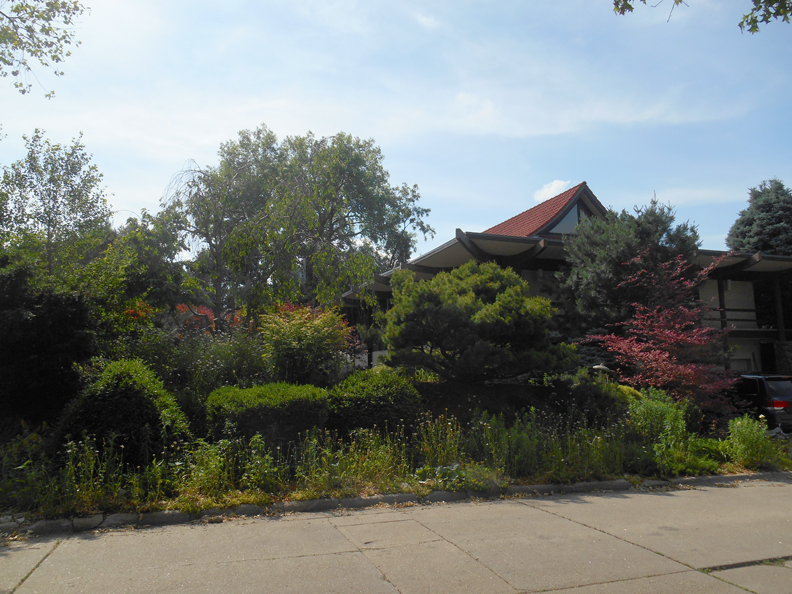
My friend and I were snooping around many years ago and came across a beautiful Japanese-style home, bolstered by huge stones, a proud stairwell entry, stately red tiled roof, enveloped by a lush, private garden. It was absolutely enchanting. Like a mysterious movie set, the pagoda-hinting home seemed positioned Just So on 70th Avenue, south of Farnam Street. I wondered why I had never noticed it before and how it came to be placed there—so unlike the rest of the neighborhood. Although seemingly very similar to the Asian art opening experience I had when I was a little girl, this home’s appearance was distinct. And it was so concealed. How does one explain those sensations without trite mention of déjà vu anyway? Soon after, I began to uncover the story of 312 South 70th Avenue, as appealing as the very home itself. Even now, I smile as I type this, fellow sleuthhounds. When I started My Omaha Obsession, I scribbled a note-to-self in the ole idea file of the tanker drawer: “The Asian House that Moved.” I knew the day would come when I would share it with you.
For those that require quick, bite size Internet reading, here is your synopsis: A local oil man paired up with a Mid Century Modern California architect to design a standout home, the likes of which has never been seen in Omaha. The pagoda inspired home was originally nestled in a beautiful, hidden Midtown neighborhood, which UNO would later acquire and mostly raze in its westward expansion. Miraculously spared when it shape shifted into an art gallery, a decade later the MCM home was again threatened with demolition. In an unforeseen undertaking, a local hero bought the gallery and arranged to have it moved a few blocks west of the campus. This striking residence and garden has found an intergenerational family and continues to inspire awe in all who pass by.
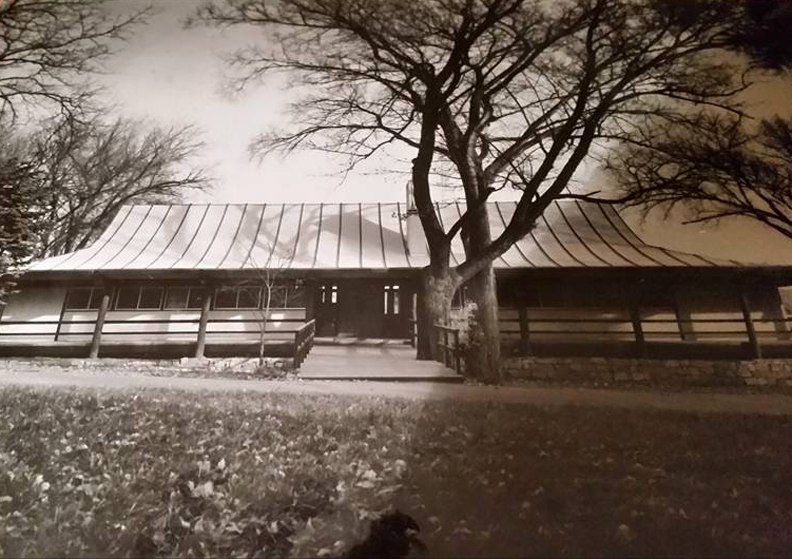
For those that want More Than A Little More and enjoy our collective detective wanderings: We have got a lot of ground to traverse today and I do hope you will join me.
For the latter: From the onset I will confide in you, friends, I have had a bit of trepidation regarding the tucked away, posh neighborhood destroyed in the UNO expansion. This massive investigation has long been percolating in a dossier called “The Neighborhood That Disappeared,” yet to be released on this website. A Thorn In My Side, Forever. In attempting to suss out those entanglements, I came to know more about the MCM Pagoda Style Mystery House—the focus of our sleuthing mission today. Every time I would sketch out it’s narrow escape from the UNO wrecking ball, I would find another fated mansion and more and more fascinating family histories buried under the rubble. It would appear that I have found a way to talk around the larger investigation for the time being. So let us tie a poppy grosgrain ribbon right HERE as a placeholder with a promise that we will come back to this huge exploration in the future.
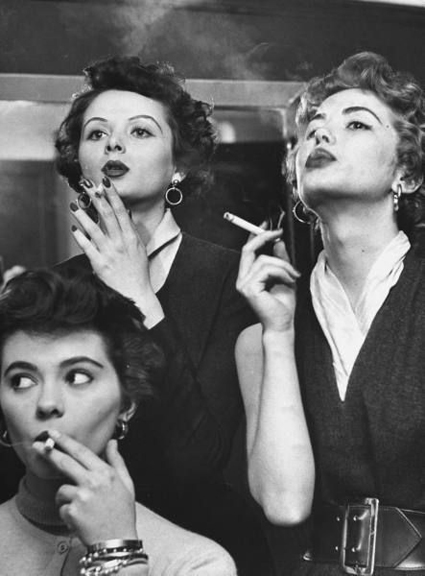
Part One
The Buena Vista Place Mystery
My visit to the Register of Deeds office was in hot pursuit of the original address of the Japanese MCM style home, now situated in the lovely Cedarnole Addition at 312 South 70th Avenue, leading to all sorts of neuroses. My favorite Deeds Detective, M. Barnes, would connect me with Pete Eckerman, who was able to work out the code to the 133 South Elmwood Road clue from some old file. I am sure it was a computer in reality, but let’s pretend the clue was mislabeled and tucked away somewhere cool and dusty. This fine hint helped to break the case wide open. I would then trace this address to the current site of the monstrous UNO Weber Fine Arts building.

Buena Vista Place original plat map. Image printed courtesy of the Douglas County Register of Deeds office. I love these things! The human touch.
Without divulging too, too much, the Buena Vista Place neighborhood was platted in spring of 1906 by the Reeds and the Busches. From what I can piece together from the Deed’s plat map, (because the district has since been decimated,) the Buena Vista Place borders were approximately 65th Street on the east, Howard Street on the south side (border of Elmwood Park), approximately 67th Street on the west and Dodge Street on the north. This also corresponded with the undated map Detective Amy Schindler, UNO Library Archives and Special Collections Director, sent over. The University of Nebraska at Omaha, then called Omaha University, was located at 24th and Pratt Streets in the early years of Buena Vista Place; UNO, as we know it would not move to its present location at 60th and Dodge Street, until 1938. It would have been hard for the gracious Buena Vista neighborhood to ever predict that an expanding University would soon be knocking at their door.
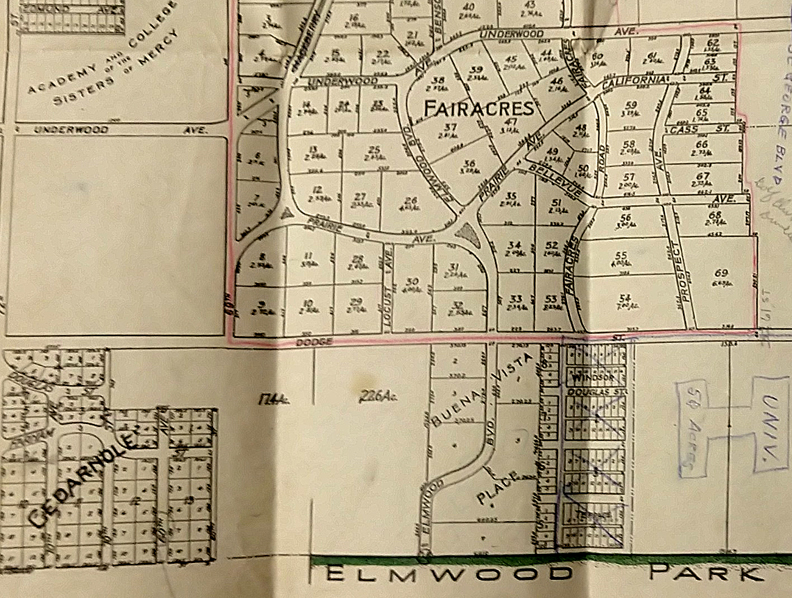
Detail of Buena Vista Place from a larger map depicting Fairacres and surrounding areas. Image courtesy of the UNO archives. Permission given by Amy Schindler, Special Collections Director. One can see upon closer inspection that North Elmwood Road connected seamlessly with South Elmwood Road. Go for a drive by the entrance of Fairacres on the north and you can estimate the once lovely drive into Buena Vista across the way. Note the Cedarnole development to the west.
Seven parcels originally lined the gentle curve of Elmwood Boulevard, later called South Elmwood Road; the nonextant road once ran north and south, seemingly connecting the well-heeled denizens of Buena Vista Place with its posh half-sister the Fairacres Neighborhood, directly to its north. North Elmwood Road, a short wandering street, carried on the north side of Dodge, now simply called Elmwood Road, remains one of the loveliest in Fairacres.
I wondered aloud to my furry sleuthing friends—was Elmwood Boulevard once a proper boulevard? Did it once lead drivers into Elmwood Park? Was it attempting connection with the Park and Boulevard system originally designed by Horace Cleveland? Not many details on Elmwood Boulevard to be found in the Streets of Omaha: Their Origins and Changes book, my habitual trusted go-to; the first mention was unearthed in the papers from F. B. Kennard’s personal advertisement for a “reliable man,” no doubt imbued with knowledge of gardening for Kennard’s home at Elmwood Boulevard and West Dodge Street back in 1912. Each of the original seven sprawling lots in the once prosperous neighborhood boasted 2- 3.90 acres in their inception. From historic photographs it is not hard to see the homes were exceptional, positioned at a haughty distance from the winding, country road. A slow but stylish tempo was insured. Not to mention the mature trees, private garden areas, swimming pools and tennis courts. Due to the limited space, guaranteeing room to roam coupled with the sheer grandness of the homes, dare I say, the Buena Vista locale hinted at a hidden exclusivity not found elsewhere in Omaha. Just Lovely. In this luxurious pace I would float down to the W. Dale Clark Library where I found the Omaha City Directories did not even whisper the arrival of “Elmwood Boulevard South” until 1928–“from Dodge south to Howard” the description read. I sighed…A Sumptuous Hush-Hush Tuckaway.
**Addendum of July 7, 2019** I found my answer to Elmwood Road potentially leading into the park. According to Emily Milder: “Elmwood Road dead-ended at the park so we would ride our bikes up and down the street to the park. There was no traffic except for the people who lived there. There were tons of kids. What a great childhood it was!”
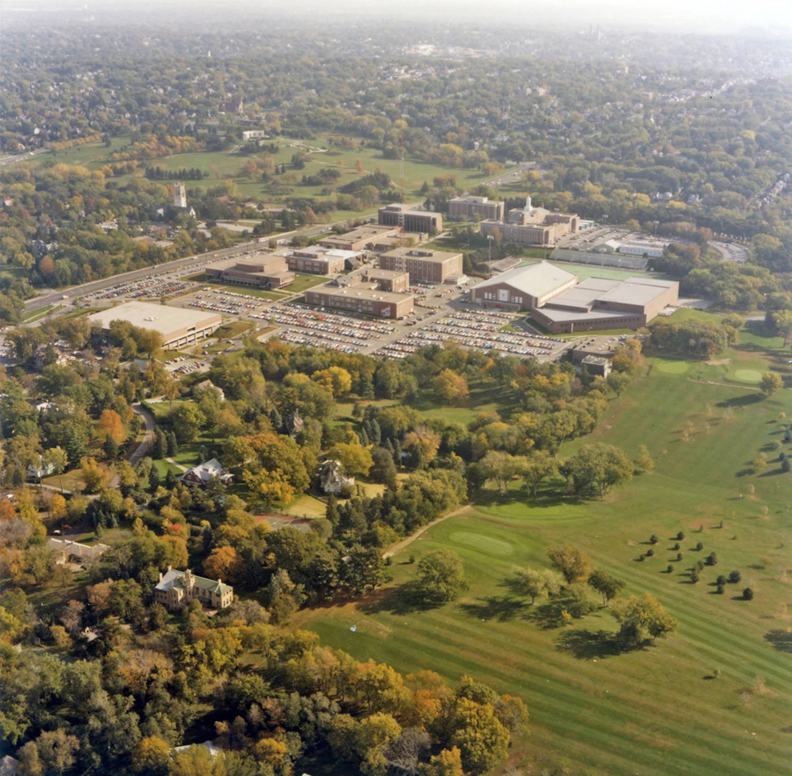
1981 aerial of the west side of UNO. Photographer is facing at a northeast diagonal. At that time some of the large homes of the Buena Vista Place (I have spied seven) are still standing in the foreground surrounded by trees. If the photo is dated accurately, Buena Vista, at that time, being used for University purposes. Elmwood Park is shown on the lower right quadrant. East West running Dodge is the main thoroughfare shown parallel to UNO. I only share this photo to give an idea of the glorious trees, curving roads, peeks of the incredible homes and overall General Perfection of Buena Vista Place. Photograph courtesy of the UNO archives. For those Obsessive Types in our crowd—doesn’t this view remind you of those melancholic scenes from Ordinary People when Conrad and Jeannine wander around in those posh preppy Lake Forest neighborhoods singing and talking?
Lot Five was one of larger parcels, sitting at three full acres. It had the privilege of a beautifully curved, west-facing frontage in the bend of the Elmwood Boulevard. This really should be its own story so I must use a sort of undesirable discipline at this juncture. The Madden family would construct their large abode on this park-like lot, later whittling off portions, sold and gathered to combine into other lots. Mr. Hymie Milder entered the fold when he purchased a portion of Lot One (originally 2.53 acres) from Bettye Bushman Milder in 1943 and part of Lot Five from the Maddens in 1952, among other slivers to include a heavenly slice of the St. Margaret Mary’s Convent, once positioned on this south side of Dodge in 1954. But this is much too decadent of a detail! Let me get back on the straight and narrow. Stay with me friends and this will all tie into a nice tidy package or I will end tied in knots. We shall see which.
The Marvelous Milders
Mr. Hymie Milder founded the Milder Oil Company in 1929. Located at 26th and Dorcas Streets at 1940 South 26th Street (I approximated down near the train tracks in the Wonderful Wandering Zone of the old Salvation Army), the company’s fleet of trucks hauled fuel to the nearly railroad, trucking and construction businesses, also offered home heating oil deliveries. Advertisements from long ago showed Milder was a distributor of Skelly Gasoline, Oil, Greases & Products and Kleen-Heet Oil Burners.
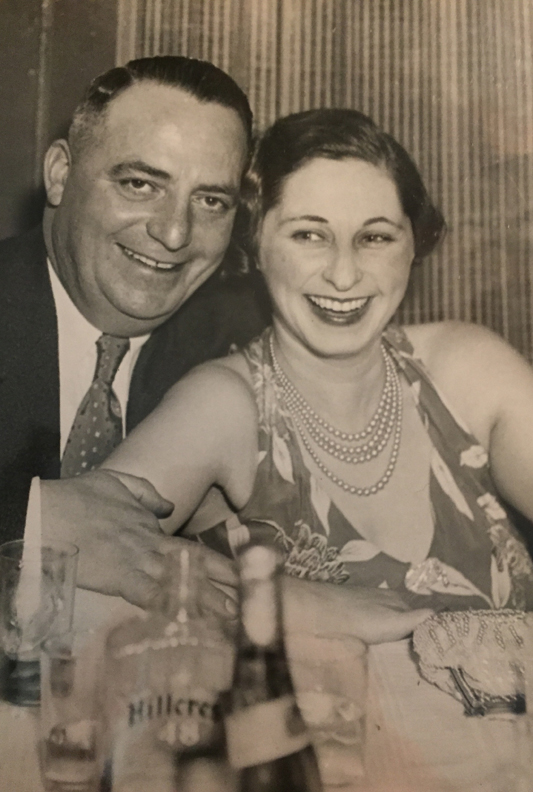
Hymie and wife, Ella Milder. Isn’t Ella Gorgeous? So fresh and stylish. Photo from the Milder family private collection, lent by (granddaughter) Emily Milder. Thank you!
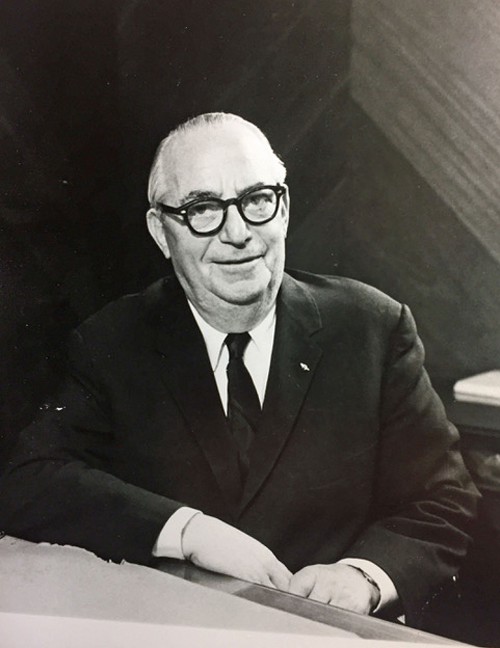
Photograph of Hymie Milder from the Milder family collection.
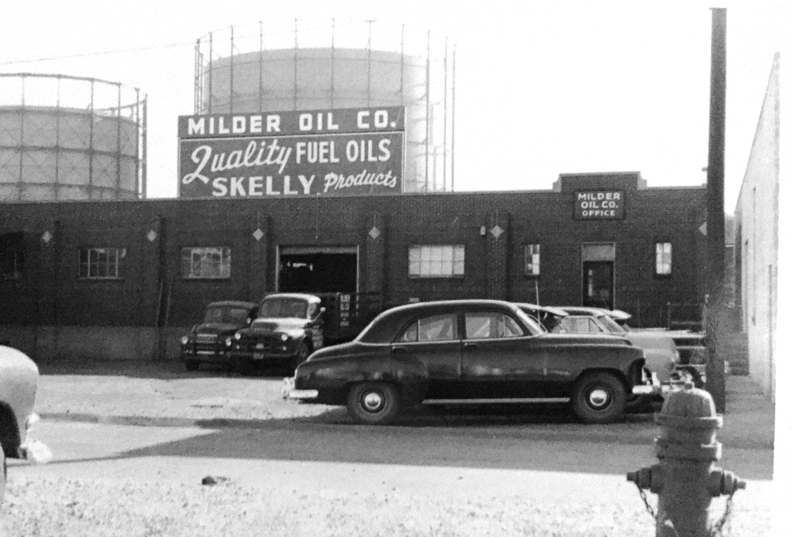
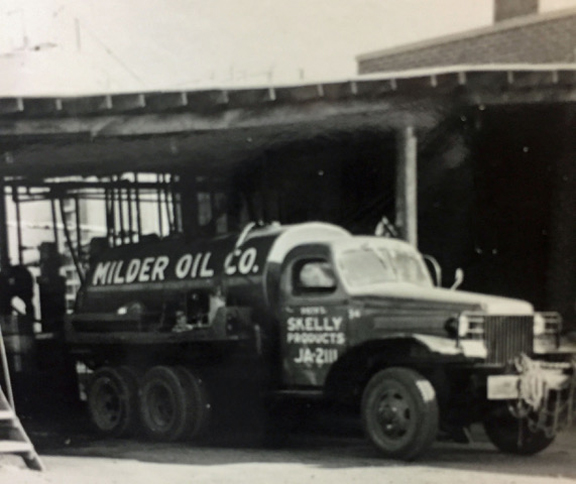

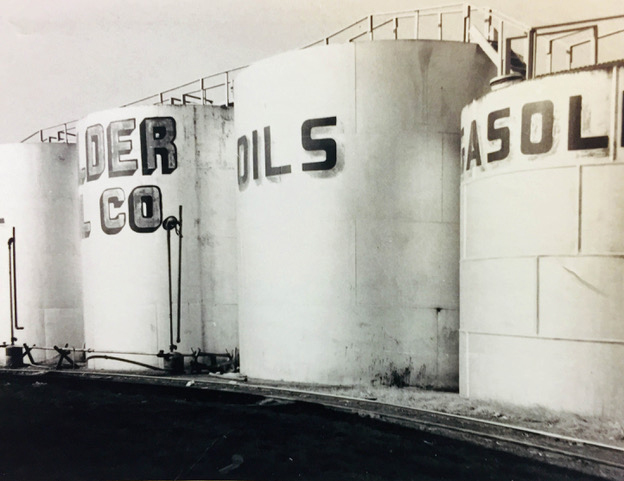
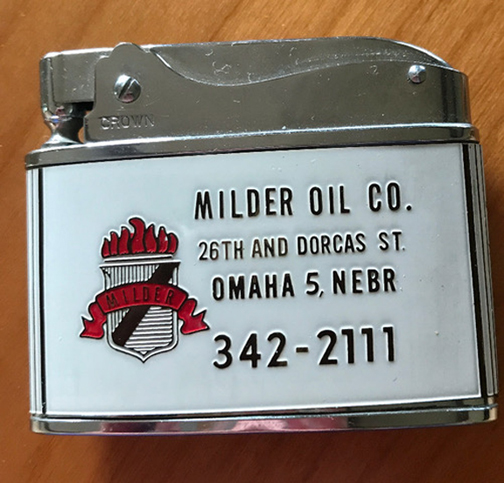

It would appear the Milder Oil business is no longer operational but as already stated, there remain many fabulous ghost warehouses down in this area worth surveying. Photographs of Milder Oil from the Milder family collection.
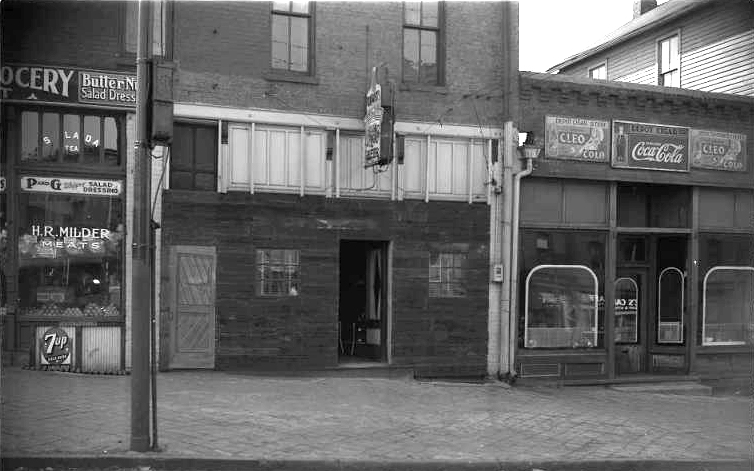
I would easily discover that Hymie Milder and other Milder family members had their hands in a number of local businesses to include a hotel. Milders Bar, located at 117 North 16th street. H.R. Milder’s grocery and the Cigar Depot are located on either side of the business. Creator: Savage, John (1903-1989). Publisher: The Durham Museum. Wasn’t Omaha cool, folks? So much to inspect here—especially the patterning of the brickwork on the sidewalk. The buildings conjure memories of the incredible Capitol Bar downtown RIP.
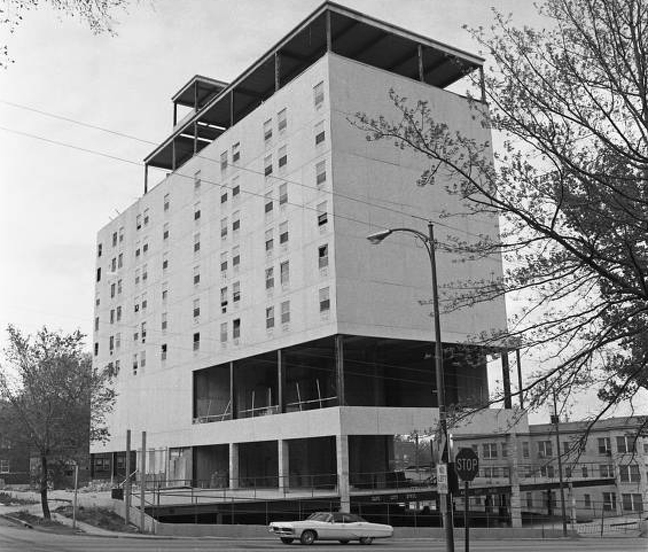
Construction being done on the Milder Motel at North 31st Ave and Dodge. Creator: Paskach, Robert (1927-2001). Publisher: The Durham Museum. 1967. Now mind you, this isn’t even the Milder owned hotel that I mention. This is their motel, much, much later. I add this photo because who ever knew that this was originally a motel? Not I! Fascinating. Still standing.
Enter Morris Milder
Now this is all terribly fascinating to me and I can burrow many tunnels aided only by a small flashlight on the blink long into the night. I tell myself, even now, that I must practice some speck of restraint. Do these clues hold a thread of connection? I believe so. Hymie’s older brother just so happened to be Mr. Morris Milder. This Mr. Milder was at one time a well-known Omahan with dubious links to political boss Tom Dennison. According to a Kansas City oil directory I came across, Morris Milder was President of the Northwest Petroleum Company back in the 1920s. Other digging would produce evidence that Morris Milder was quite successful in Omaha, commonly tagged a Millionaire and a Real Snappy Dresser. (These designations do not often commingle in Aw-Shucks-Omaha so take heed.) U. S. Census data and World War I Registration card would point to Morris’s birth in Russia in 1886. Margin Notes: The Milder family emigration happened a few years after Morris’ birth; brother Hymie would be born shortly in the States. It was the Durham Museum’s curious labeling of an exterior view of Morris Milder’s glorious “Fairacres home,” describing him as “President of the U. S. Oil Works” that led to a deeper investigation.

Creator: Bostwick, Louis (1868-1943) and Frohardt, Homer (1885-1972). Publisher: The Durham Museum. Date: July of 1921. Here is that very photo.
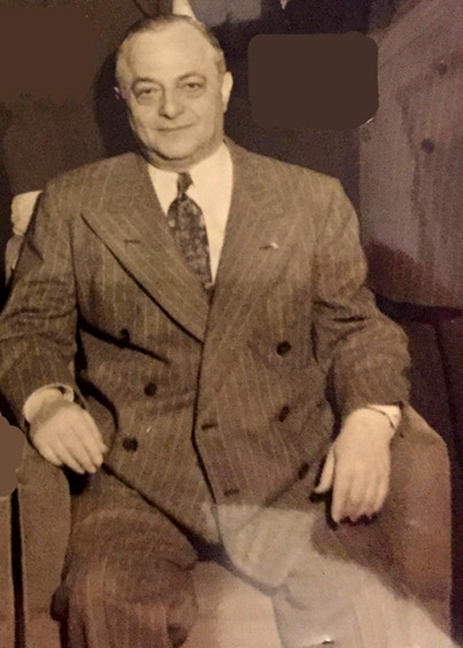
Photograph of Morris Milder from the Milder family collection.
Orville D. Menard’s fine book, River City Empire, made plain Morris Milder was a “long-time worker” in Tom Dennison’s shadowy machine—having served as “expert bookkeeper” (wink wink) to “collections” (picking up protection payments) to “recorder of collections” (don’t ask). Menard’s book attributes Milder’s successful oil business accounts with the local filling stations, garage owners, taxi companies, police, sheriff, fire, and most city and county officials to Tom Dennison’s influential connections. Aside from his profitable gasoline and petroleum enterprise, Morris Milder continued his longtime employment with Dennison, intertwined within the underworld’s prostitution, bootlegging, gambling and his specialty–“election time responsibilities.” The Face of a Naked Lady: An Omaha Family Mystery by Michael Rips (great read if you haven’t discovered it already) shed further light on the mysterious Morris Milder. Apparently Tom Dennison and Milder would have a mythical fall-out over Milder’s attempt to rig an (already rigged) election, prompting Dennison to destroy Milder’s U. S. Oil Works business. Apparently Milder would forever be held up as a cautionary tale of how not to treat “the Rogue Who Ruled Omaha.” Menard hinted that Dennison’s seemingly unending, revenge plan would include sending henchman into Hymie Milder’s hotel with stink bombs. Morris Milder was eventually run out of Omaha.
Who was I to question Hymie Milder’s straight from the shoulder demeanor? Were there murky business dealings interlaced with brother Morris? It was Conceivable. Contrarily Hymie seemed refreshingly frank about his own business transactions however I did find shreds of evidence indicating Hymie’s favor among political circles. Possibly it was his bigger than life personality? Son Orvel (also Orville) would describe his father in the World Herald as “active behind the scenes” in city and county politics, although never formally running for public office. He pointed to a political cartoon that depicted Omaha government as a “ship of state” with the mayor at the helm and Hymie Milder in the boiler room, actually controlling things. It was all fascinating. Michael Rips posits that Hymie was driven around in a long black limousine even in his leisure hours. Also outlining a remarkable meeting between Al Capone and Hymie Milder— a Chicago assignment that Morris sent his younger brother to wrap up.
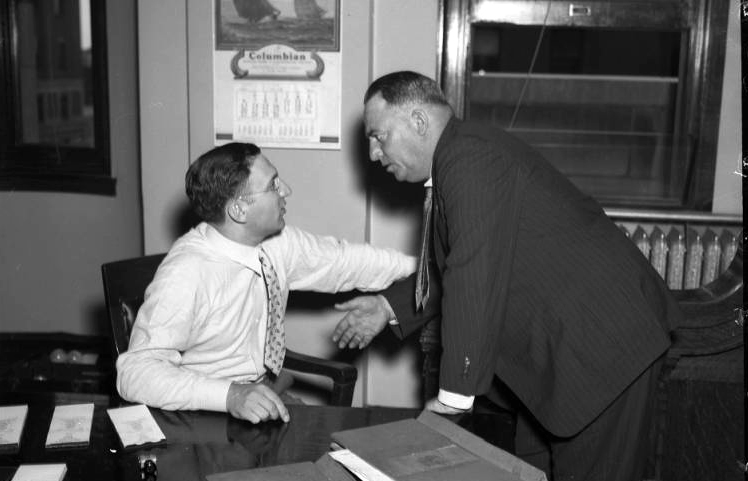
Mystery Photo. The detail read: “Hymie Milder with his brother Myron (Mike) behind a desk. The two are looking at each other. Creator: Savage, John (1903-1989). Publisher: The Durham Museum. March of 1960.” Now the problem became one of labeling. Hymie and Mike were father and son. Hymie’s brother was Morris. I hope a Milder family member can tip us off. Hymie did not look to me like either one of these two. But after further study, the problem is possibly the date. This looks like a late 1940s photo and not a 1960 image. If this was in fact from the late 40s, the standing man could be a younger Hymie with Morris sitting behind the desk. Hymie was known to be a larger man. If this is truly how Hymie looked, I could see sending him off with confidence to meet Mr. Al Capone. Whew…
**Addendum** We have received confirmation that this photo was not of Morris Milder. Hymie Milder is the man standing. Ducky believes the seated man is some employee of the Milder Oil Company, name unknown.
Inspection of Lots One and Five
Mr. Hymie, wife Ella Braunstein, sons Myron “Mike” and the younger Orvel (sometimes Orville) would move into a gorgeous 1920, three-story brick residence at 105 South Elmwood Road in the Buena Vista neighborhood in 1943.
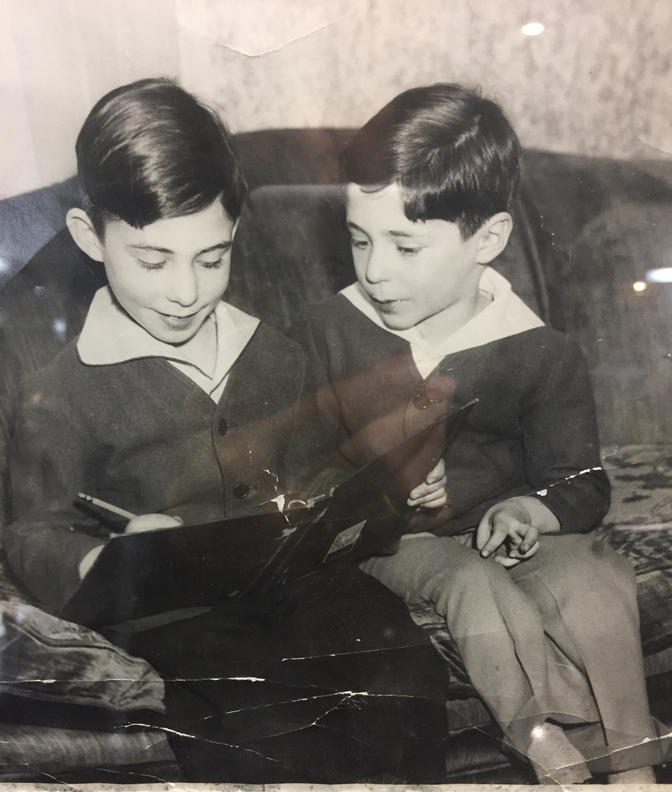
Photo of the Milder boys. Mike and Orvel. Photo from the private Milder family collection.

The Milders at an event. Orvel, Hymie, Ella and Mike. Photograph graciously lent by Emily Milder, youngest child of Mike and Ducky Milder.
According to the World Herald this house was the scene of two serious fires—one back in April of 1933 where all of the interiors and furnishing were destroyed. Another smolderer in January 1957 left extensive smoke and water damage; luckily Ella and her maid were rescued unscathed in this second fire. Upon further survey of the University of Nebraska at Omaha historic photographs, I would find that Hymie Milder’s residence at 105 South Elmwood Road was, in fact, the same Morris Milder home, incorrectly ascribed to Fairacres in the previous photo. Annotation**I would continue to find this address listed under Fairacres throughout the World Herald archives, leading me to believe that Buena Vista Place was somehow within that privileged fold.

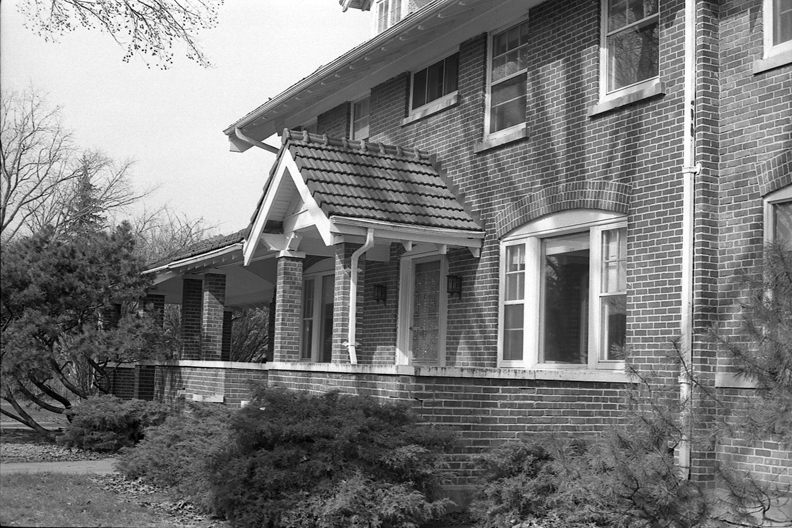
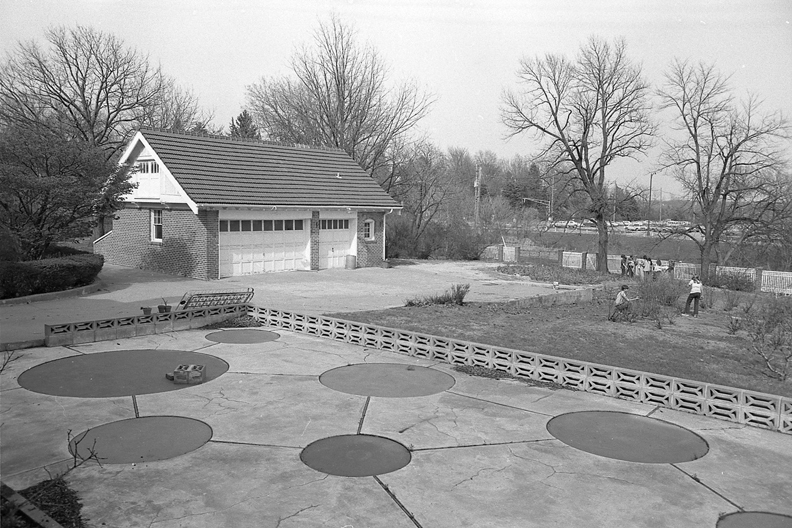
105 South Elmwood Road photos. Lent with permission from the collection of the UNO archives. Thanks to Amy Schindler, the UNO Libraries’ Director of Archives & Special Collections.
This sent me rifling back through my copies of the original deeds and abstracts of the area—revealing Bettye Bushman Milder purchased Lot One or a portion of it, back in 1923. Closer inspection of the 1928 City Directory found 105 Elmwood Boulevard South inhabited by one Milder, Morris. Find a Grave website would solidify my suspicion that Morris and Bettye Milder were, indeed, a married couple. In light of this revelation, I began to wonder if the early house fire at 105 South Elmwood Road was possibly chalked up to the Dennison Gang. Just a passing leeriness. I would surmise that the Morris Milders possibly cleared out of town in the 1930s (the home was listed as vacant in the mid 30s) but must have dipped back into the Omaha scene frequently, as the directory sometimes indicated they kept this Buena Vista address in their name. Maybe they rented out the home? Clues would point to him merging into another oil company, later owning the St. Joseph Sanitation Company. Find a Grave would reveal the elder Milder died at the age of 77 in 1963 in St. Joseph, Missouri, although he is buried in Omaha.
Mike Milder
In the early 1950s 105 South Elmwood Road was also home to son Myron Harry “Mike” Milder, then the young Vice President of his father’s enterprise, the Milder Oil Company. Mike came from a long line of politically minded characters, the kind of person I always get excited to discover in these house investigations but I was long for specific details of his personality. I will tip you off that Mike Milder was the homeowner who ordered up the Pagoda Dream House of our investigation. I was obsessed with finding the clue that would tip-off his Asian architectural influence.
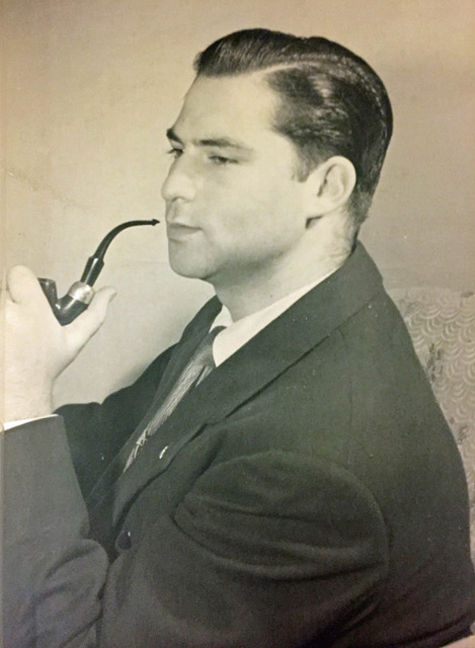
Photograph of Myron “Mike” Milder from the Milder family collection. With thanks to Emily.
Throughout his life Mike was focused on people, politics and international affairs. He graduated from Central High School and would serve in the Navy from 1945 to 1946. By 1954 he was chairman of a 14-state Young Republicans Midwest Council convention, having attended the University of Nebraska in Lincoln, George Washington University, University of Omaha and the University of Idaho. He was awarded Omaha’s Outstanding Young Man for 1959. I would discover his name over and over as he participated in Republican Party politics through the mid-1970s, reputedly working numerous national and local campaigns and attending every Republican National Convention from 1956 through 1972.
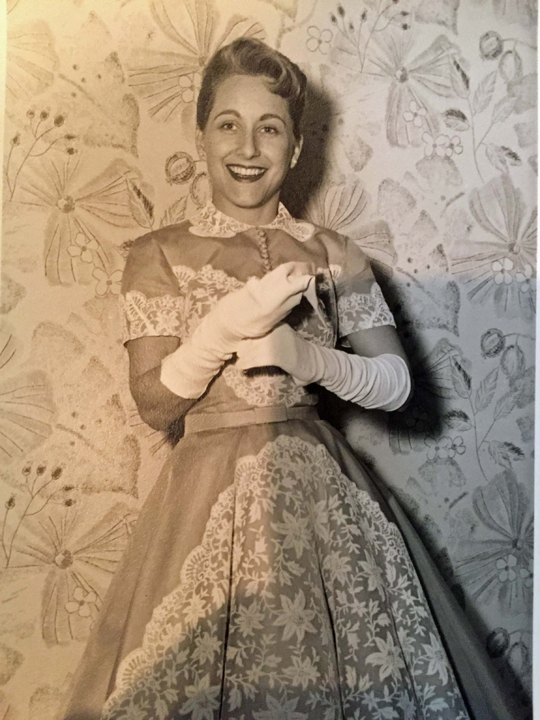
By the late 50s I discovered Mike had married wife Lois “Ducky.” I was pleased to learn that Ducky was and remains an interior designer and an artist. Mike and Ducky had two children, Mike Jr. and Emily. According to her daughter, Emily, Ducky designed a number of apartments for clients in the Swanson Towers to include the home of an Omaha Famous family in the last decade. Beautiful photo of Ducky Milder shared from the Milder family collection. Aside from that divine dress, Miss Cassette adores this wallpaper!
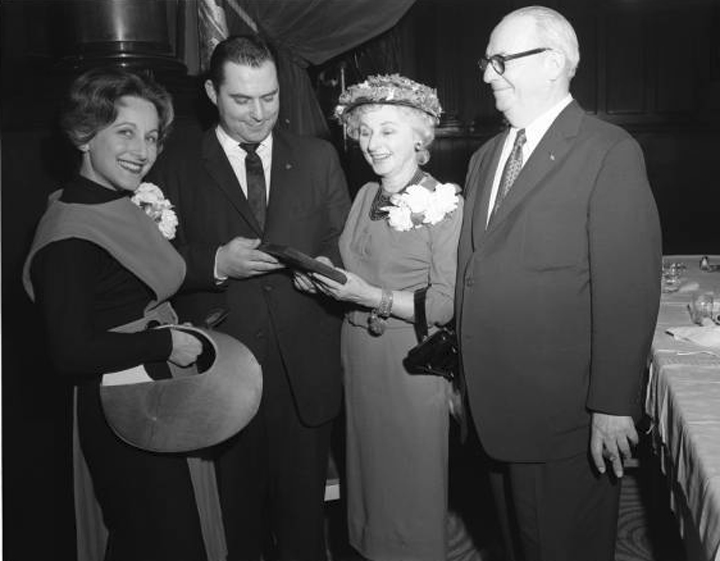
Mike Milder standing with wife, Ducky and his parents, Mr. and Mrs. Hymie Milder. Creator: Savage, John (1903-1989). Publisher: Durham Museum. Date: 1960. Let us focus on Ducky’s stylish circular handbag. I Am Taken with this bag, her dramatic dress and her beautiful expression. Also note Hymie’s cigar and Mrs. Ella Braunstein Milder’s fetching bracelet. Mike Milder looks so very much like the previous photo of the (potentially) young Hymie.
It was through his work as a Jaycees’ delegate at international meetings, that Mike Milder would become a world traveler. Was this the impactful needle in the haystack clue I was looking for? Through Mike’s travels he would make many international friendships and connections, and was known to invite these friends to stay in his Omaha home. And what a home it was.
The Plan
In 1958 Mike and Ducky Milder lived at 118 South 69th Street early in their marriage. They would reside there until 1964.
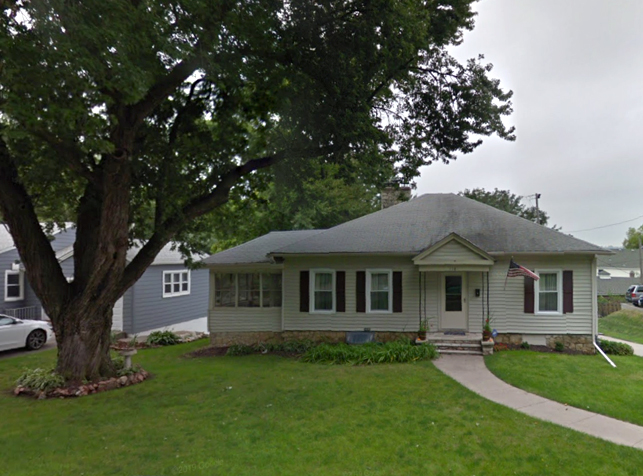
118 South 69th Street. The Milders’ first home.
According to the long list of handwritten names entered into the Deeds Book, in December of 1961 parents Hymie and Ella Milder sold part of their Buena Vista Place property to their son Mike. As stated earlier Hymie’s property was originally three full acres but with the Milders’ additional acquisitions, it had grown considerably. From my review of all documents it would appear that Mike and Ducky were granted 1.94 acres for their project. Hymie and Ella’s home was positioned on the remaining 3.16 acres.
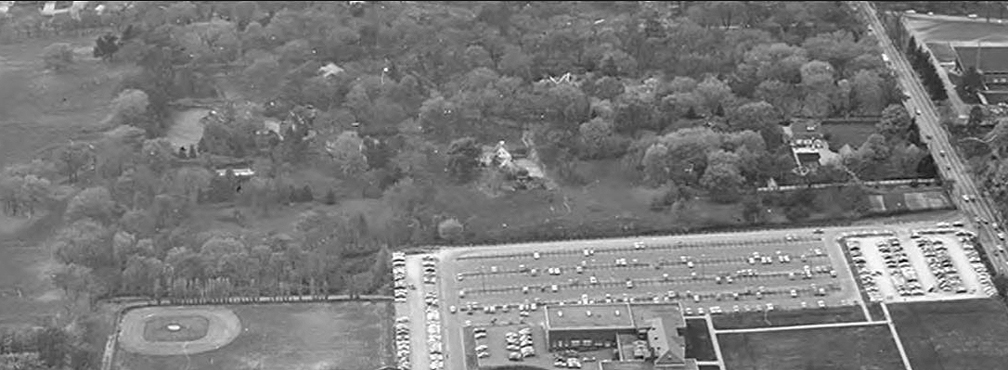
UNO Campus Aerial. 1963. Photographer is facing the west. Image courtesy of the UNO libraries digital collections archive. Photo shows the well developed Buena Vista Place neighborhood abutting the growing UNO to the east. A UNO parking lot and a ball field is shown. Dodge Street runs east west on the right side of the photo.
The Plan Revealed
I had the pleasure of knowing Omaha legend, Isabella Threlkeld, my father’s close friend, while I was growing up. I was delighted to find her ringing in from the past about the Milder-Polsky relationship. In her estimation Mike Milder and architect Donald Polsky worked on the design of the Milders’ home throughout 1964 and 1965. It is commonly thought that Mike and Ducky’s home was completed in 1965. Of curious note, I would not discover the 133 South Elmwood Road address in the City Directory until 1967; it possibly was just included with the elder Milder’s property before receiving its own separate address. Threlkeld’s World Herald interview would enlighten those times. The goal, from her perspective, was to “develop a contemporary structure carefully suited for the slope of the tree-covered hill just west of what was then the UNO campus.” The MCM’s home front door faced west. Many of the trees surrounding the home, thought to influence the design, were later killed by Dutch Elm disease. From other sources I would ascertain the two Milder families enjoyed their shared five plus acre wooded park on South Elmwood Road. It pleases me to no end to imagine this spacious Milder estate on the edges of both UNO and Elmwood Park, in a day when no fences were needed. Can you hear the birds on a quiet Saturday morning?
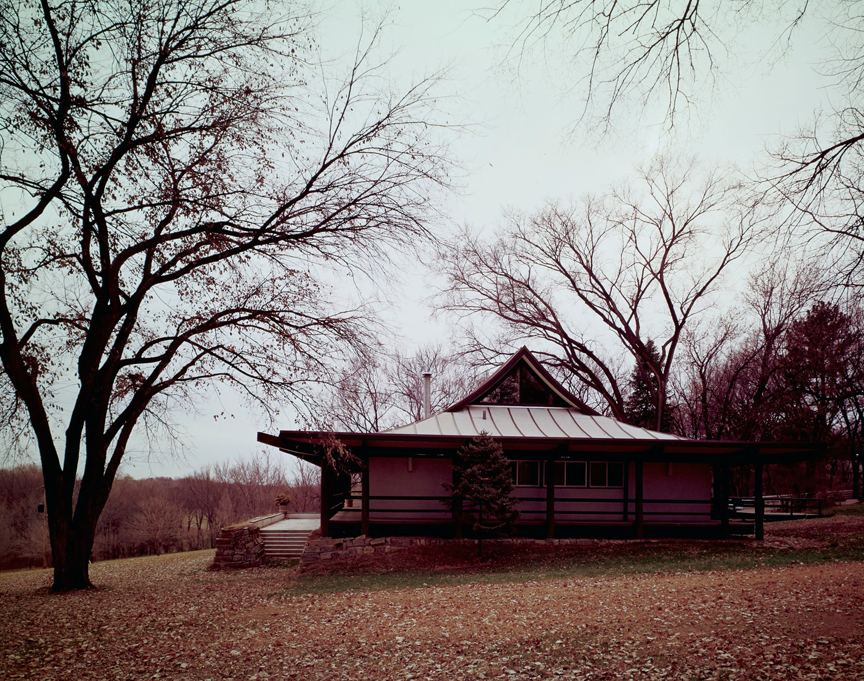
Julius Shulman photography archive, 1936-1997. The Mike Milder house. 133 South Elmwood Road.
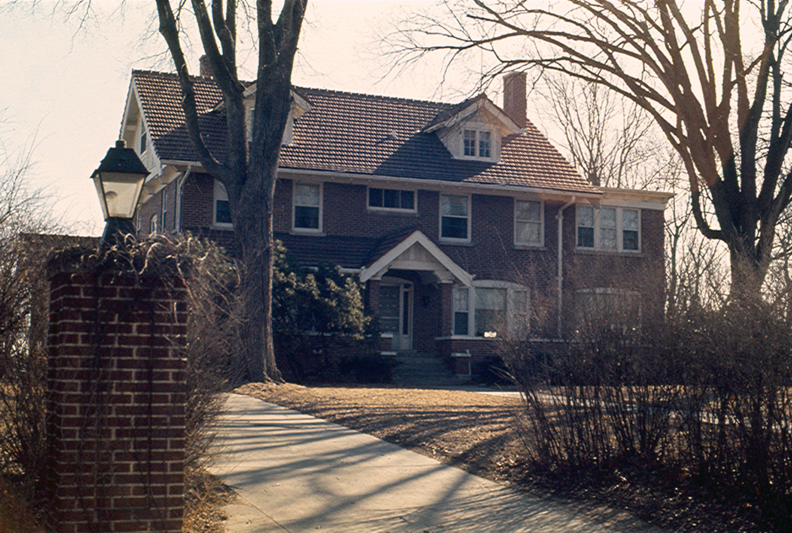
The Hymie Milder house. 105 South Elmwood Road. Lent with permission from the collection of the UNO archives.
Architect Polsky was not consciously trying to design a Japanese style house, a repeated clarification I would find over and over again in the research of this article. According to Threlkeld, “Much of the place’s contemporary architecture, however, is derived from the Oriental use of space, air, light and natural materials.” From Miss Cassette’s perspective a potential connection to the Japanese Room concept is found in Polsky’s straight lines and right angles. Sliding doors, natural crossbeams, pillars. They say the Japanese room is best observed from the floor. Having drooled over the interior photographs of the Milders’ home, it is easy to see that a tatami mat vantage point could only enhance Polsky’s design. Consider his 30 lodge pole pine columns, which support the roof around the edge of the home. A wooden bridge entrance, leading to ash wood portals and a roll roof with copper battens, projecting out to the very corners—understandably leading the Obsessed to contemplate a Japanese temple design. Modernists in the West have long been influenced by the traditional Japanese way. Meanwhile have you ever looked into the California Modernist Style homes built in Tokyo? It suddenly all made sense. We are one.
Construction File
The following amazing photos were shared by Emily Milder of her family home on Elmwood Road being built. For those who love beams and engineering, even amateurs like me, they offer a wonderful glimpse into the early days of the Polsky design come to light. Some day we may even get to see blueprints or early sketches!
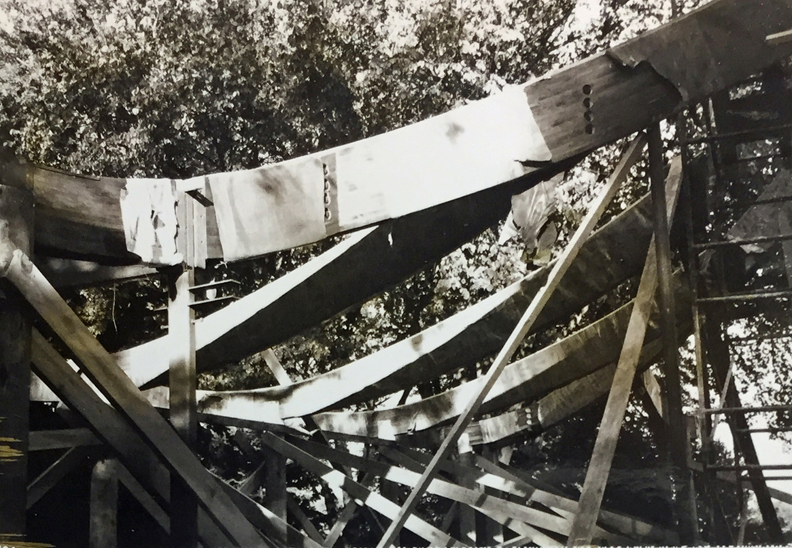
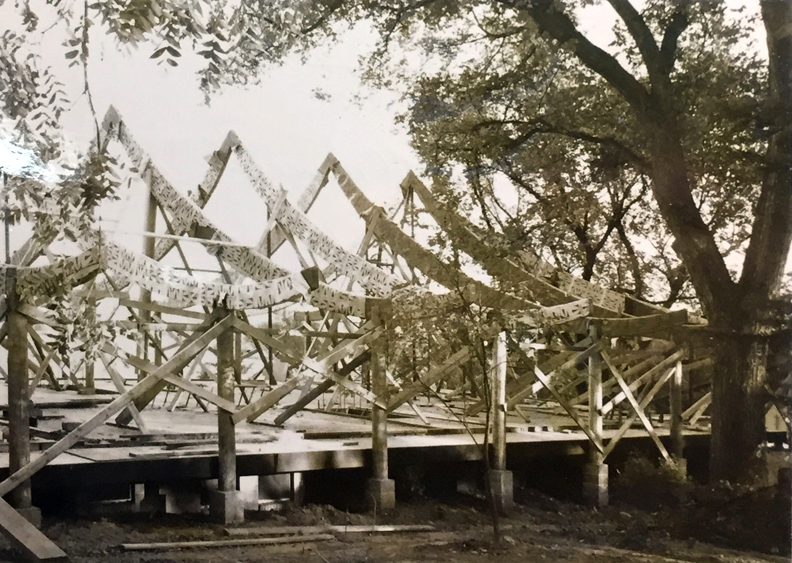
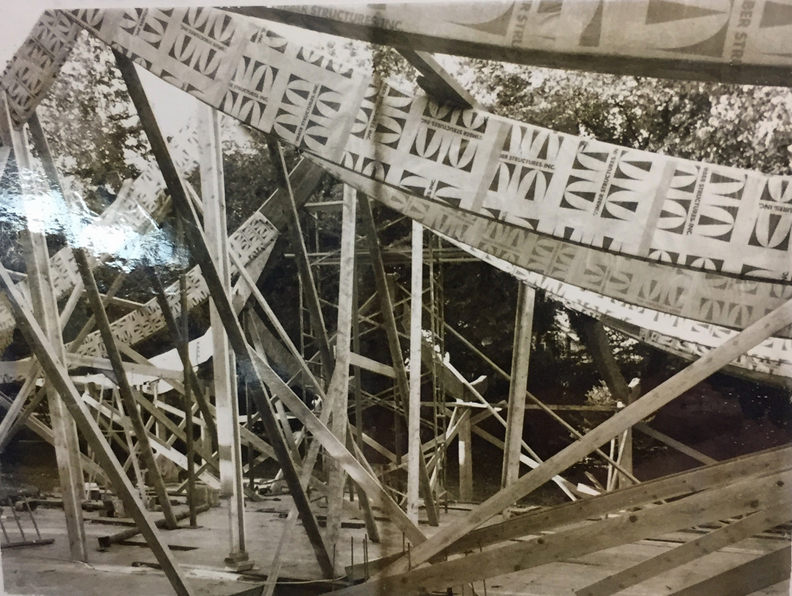
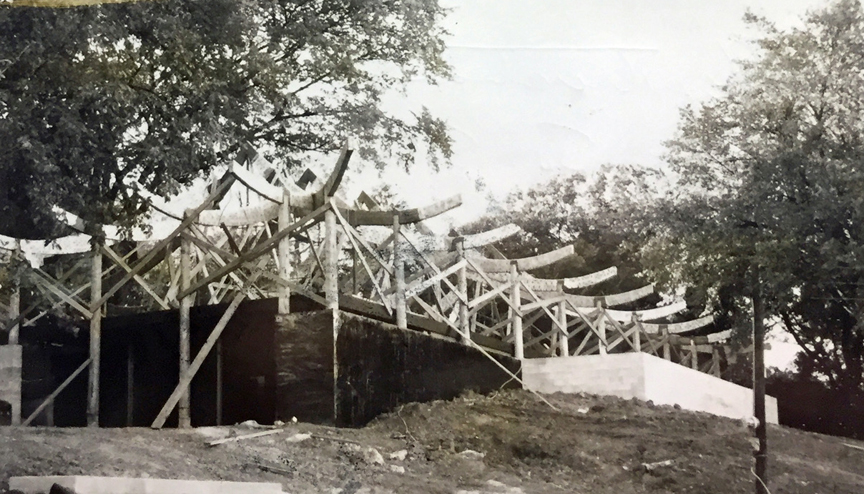


Descriptions
When it was built, 133 South Elmwood Road was commonly described in Omaha as a “Modern Oriental” home, a label that possibly miffed all involved. It was difficult to find many details of the interior, claw as I might. The Milder residence was said to feature a 21-foot high ceiling on the main floor. Purportedly the 3000 plus square foot home was divided into two parts. One side featured the formal rooms: the living room, dining room, parlor, kitchen, breakfast nook and utility room. There are two original fireplaces. The other side of the home offered the master bedroom-bathroom suite, plus three other bedrooms and two bathrooms. Polsky designed with the popular Open Floor Plan. I am not 100% sure that this was original but apparently a spiral staircase in the middle of the house connects to the equal-sized lower level. The maid’s quarters and larger than large recreation room (this was the mid-60’s after all) were in the basement.
The Julius Shulman 4103 Dossier
A major arc of the covenant score occurred the day I found the Digital Public Library of America site. Julius Shulman, 1910-2009, was an active architectural photographer from 1936 until 1986. Particularly interested in documenting the Modern movement in architecture, Shulman focused primarily on the Southern California landscape. Lo and behold, he apparently paid a visit to the Milder House back in 1966. I was so, so delighted to find these breathtaking, warm images.
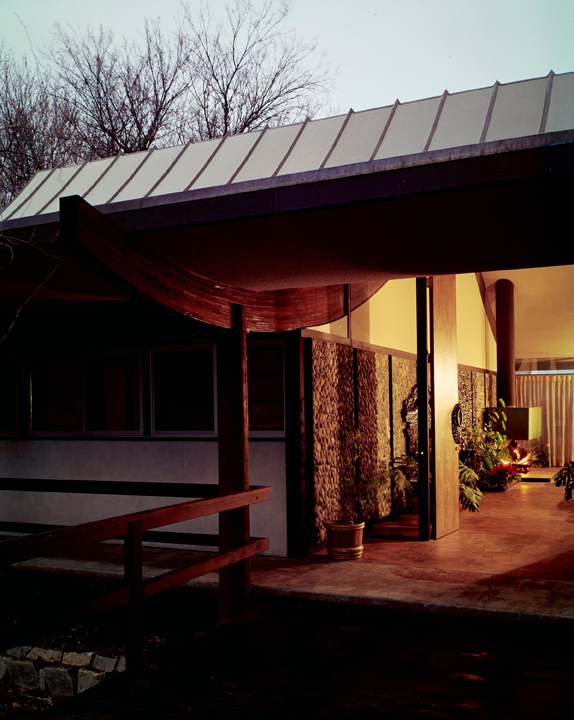
Julius Shulman photography archive, 1936-1997.

Julius Shulman photography archive, 1936-1997.
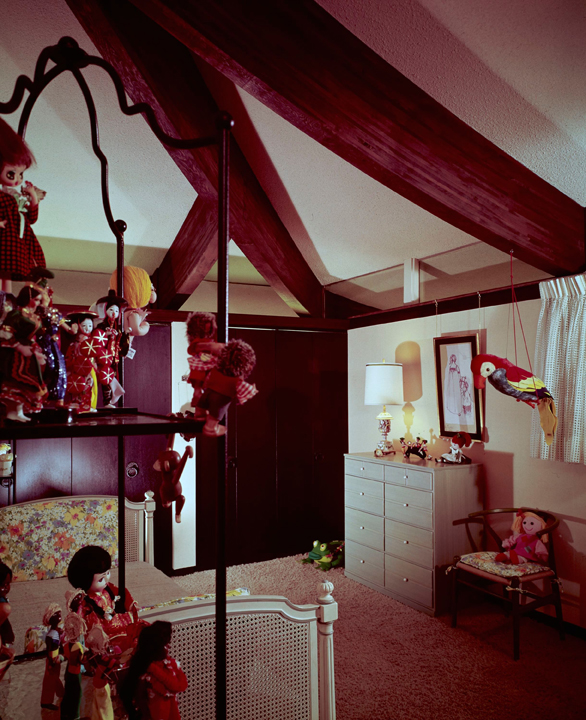
Julius Shulman photography archive, 1936-1997.
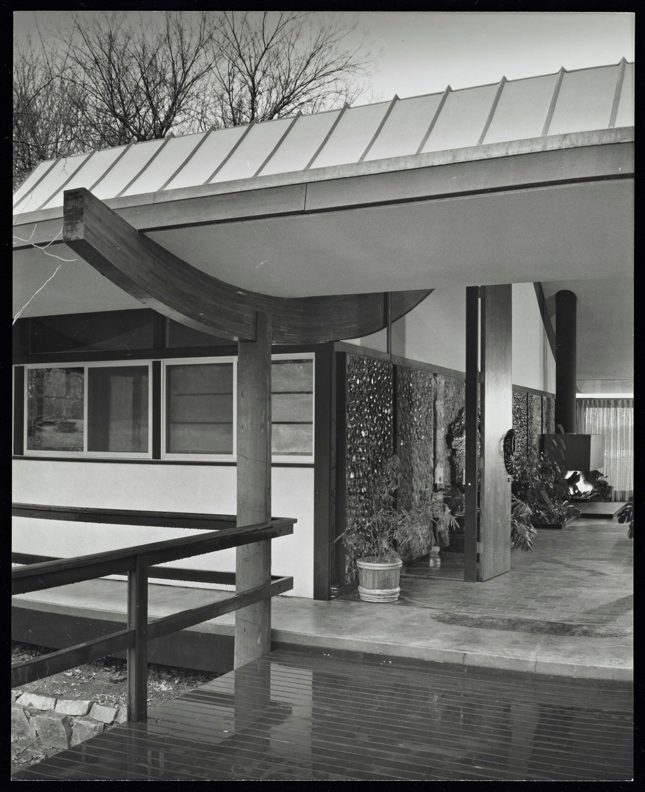
Julius Shulman photography archive, 1936-1997.
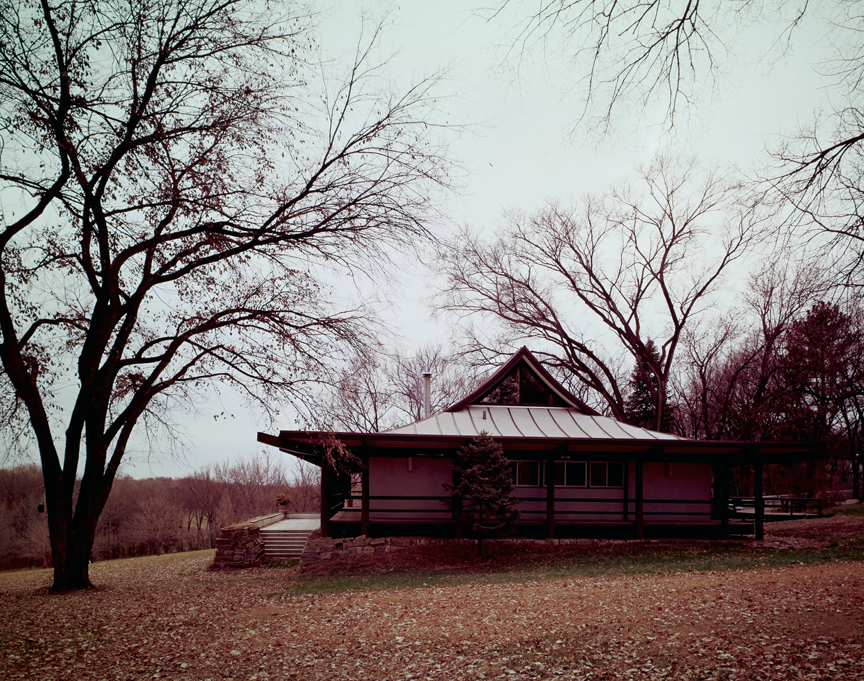
Julius Shulman photography archive, 1936-1997. These incredible photographs borrowed with permission. Creator: Shulman, Julius, photographer; Polsky, Donald, architect. © J. Paul Getty Trust. Getty Research Institute, Los Angeles (2004.R.10).
Mystery Interior Shots
A fellow detective had written me a while back about doing a story on this home. He was not the only one, by the way. Many of us Go Nutso over this home. But this particular gentleman generously sent along these images that look to be from someone’s portfolio, I believe. Try as I might, I could not and cannot find the original email as I had secured these images into another file. Please let me know who you are as I would love to credit you, sleuth. …or not. But thank you for sharing with all of us!
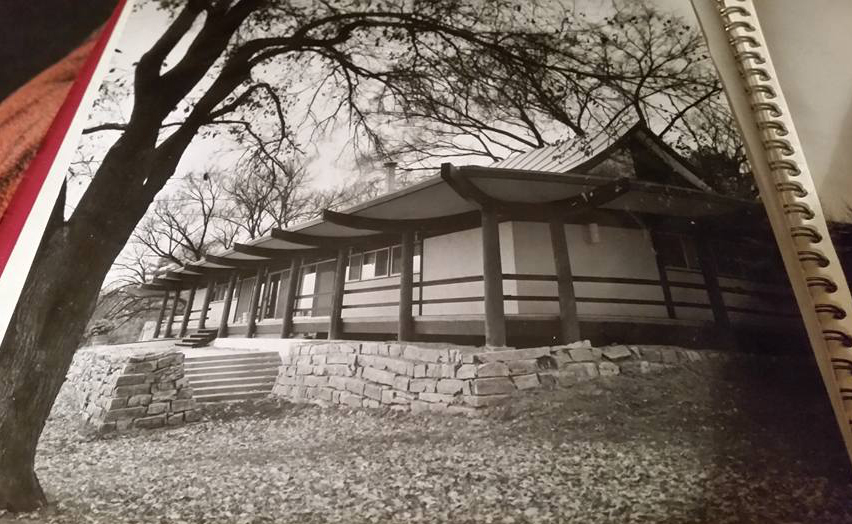
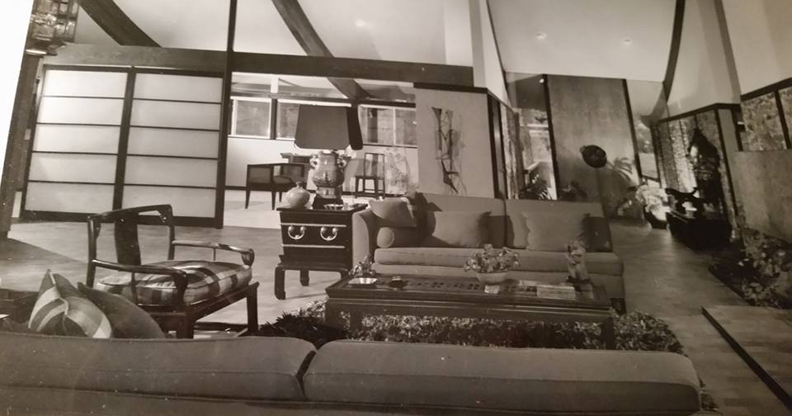
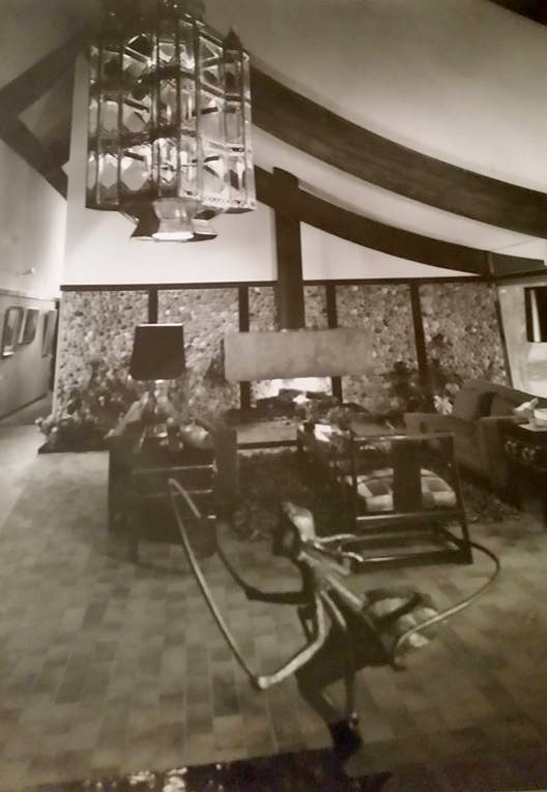
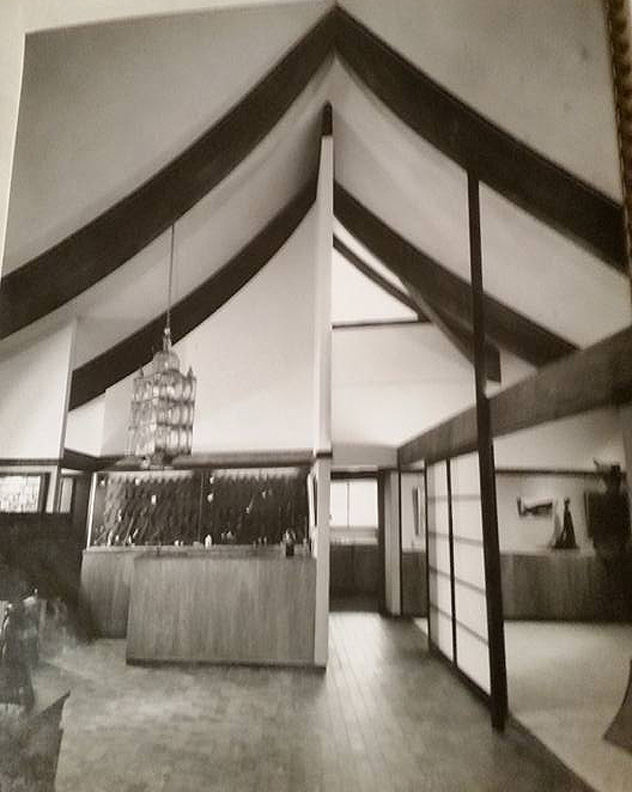
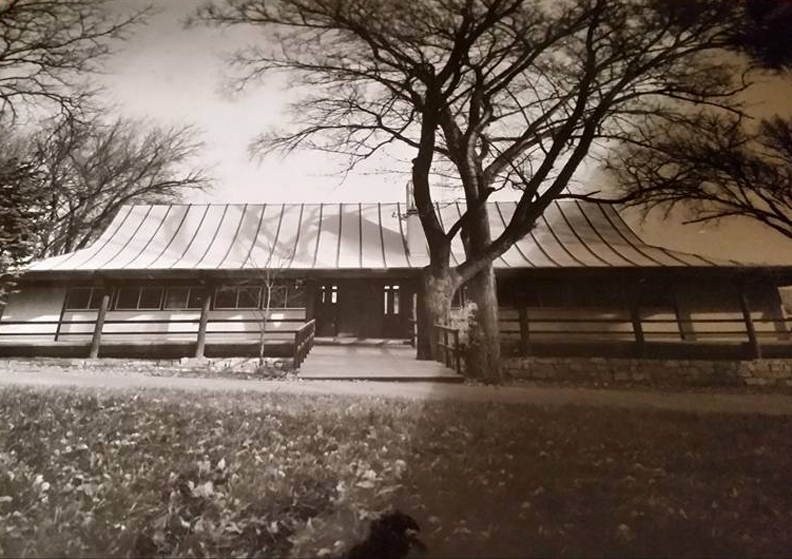
Influence
Was Mike Milder the driving force behind the Japanese styled design of 133 South Elmwood Road? How did he come to work with the incredible architect Donald Polsky? What did Mike know of Japan and Japanese culture? All questions I was dying to know. In December of 1965 the World Herald spared a tiny light on the potential connection. Purportedly a new American-style bar had opened for business in Omaha’s Sister City, Shizuoka, Japan. Kenji Matsui had named his new enterprise The Omaha Bar—apparently an immediate success. Previously Mike Milder had befriended banker, Ryohei Ishikawa, also a friend of Matsui’s and a member of the official Sister City delegation. Milder, it would seem, kept in good touch with these friends through letter writing.
Donald Polsky
Architect Donald Perry Polsky is known for his Mid-Century Modern style, celebrated in these parts for having brought California Modern to Omaha. Born in Milwaukee in the late 20s, Polsky grew up in nearby Lincoln, Nebraska, where he would graduate from the University of Nebraska College of Engineering in 1951 with a degree in architecture. He served as First Lieutenant of the United States Air Force from 1951-1953. It would appear that Polsky intentionally secured work under well-known Richard Neutra’s wing in the years following his service. Richard Neutra, an Austrian American architect, was known for defining modernist architecture, particularly in Southern California. https://www.laconservancy.org/architects/richard-neutra
If I am to understand Polsky’s resume, laid out on one architectural website, Neutra and Polsky would actually meet through the Air Force on an installation in French Morocco. Post military Donald Polsky studied and worked with Neutra from 1953-1956, but by the mid 1950s had formed Donald P. Polsky, AIA and Associates. Later merging into Polsky and Gassman, I would find him registered in both California and Nebraska. By 1962, Polsky had a strapping business with an office in Beverly Hills, was designing for celebrities and winning architectural awards left and right.
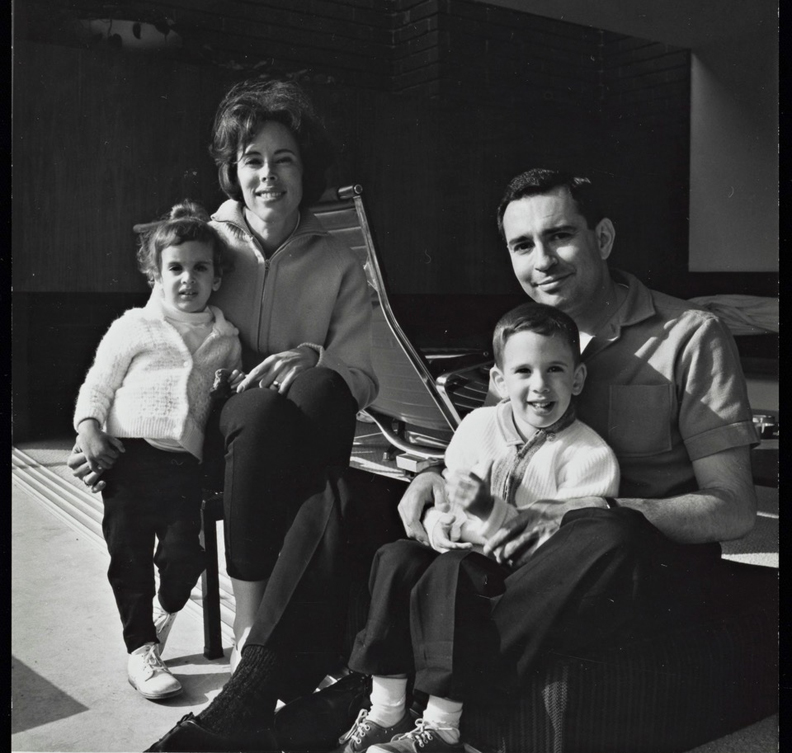
Julius Shulman photography archive, 1936-1997. Photograph of the Polsky family lent by Emily Milder. What a fantastic, casual image. Finally I can get a peek at Don Polsky! Remember those white baby shoes we all had to wear? Wow.
Was it really Mike Milder and the Milder House project that brought Polsky to Omaha? The rumor goes that Mike couldn’t find anyone to build his dream home, indicating he had a pretty strong vision of what he wanted. Donald Polsky would move back to Omaha soon after. I would call landlines and other lines in the Polsky name with the dream of asking my questions to no avail. I feared the great architect had possibly passed away and I was too late. Thanks to Polsky’s friend and local Polsky Archivist-Aficionado, Travis Sing, I would learn Donald Polsky is alive, residing in California with family since 2014 and is about to turn 91 years of age. Aided by the generosity of Sing, I would acquire Mr. Polsky’s email address in hopes of touching base. I knew it was a very long shot when I reached out to him and I have yet to hear back. But I do appreciate Travis’s kindness in trying to usher that along.

Great photograph of a party gathering in The Home from the Milder family collection. Donald Polsky second from the left and Mike Milder, fourth in.
Emily Milder has since explained that Mike Milder and Don Polsky were college buddies at the University of Nebraska in Lincoln. Additionally she shared, “Don’s daughter, Debbie Polsky Werner and I met when they moved to Omaha and we have been best friends ever since. I grew up at her home on S. 89th Street and she grew up at mine on Elmwood Road.”
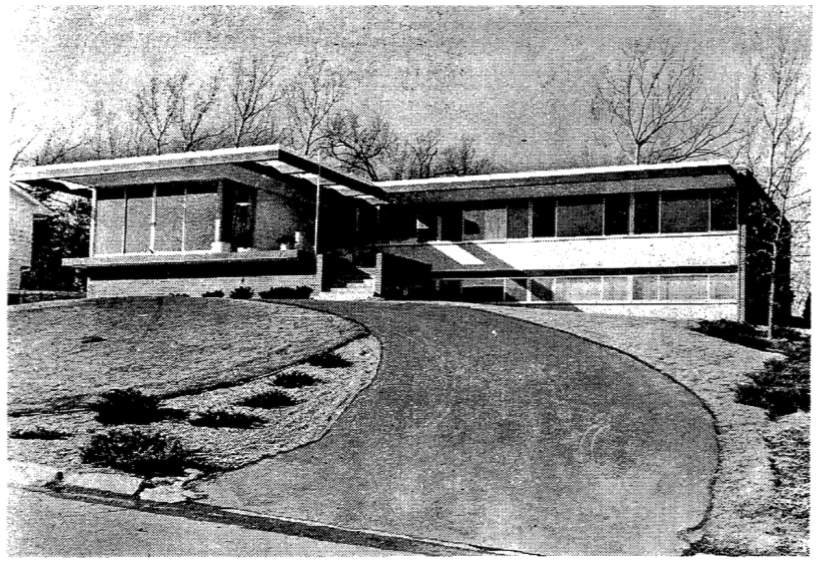
106 South 89th Street. Photo from the OWH archives. One of Polsky’s most impressive designs was this creation for his own family: 106 South 89th Street. Clearly a MCM plot but I quickly labeled it a DDG model—for Drop Dead Gorgeous. I was in this amazing house during the 2012 Mid-Century Modern Tour organized by Restoration Exchange Omaha. What a fortuitous coincidence that Travis Sing owned this gorgeous Polsky at that time.
Polsky would go on to design many fabulous homes in this area. I found Polsky’s great local designs at Landmarks Heritage Preservation Commission site: https://landmark.cityofomaha.org/collections/polsky-collection.
Another interesting Polsky-Neutra-Omaha Connection. Previously in the https://myomahaobsession.com/2018/08/19/mysteries-of-omaha-6617-cuming-street/ mystery, I had discovered that in July 1970, old My Omaha Obsession favorite, Daniel Katzman had announced the contract for the architectural and engineering services on the proposed $2 million Jewish Community Center at Ninety-sixth Street and Western Avenue. This was to be awarded to Richard and son Dion Neutra of Los Angeles and Donald P. Polsky of Omaha. Meanwhile it would appear that Richard Neutra had died just months before in April 1970. Katzman anticipated the construction to begin in 1971.
House as Celebrity and Grand Host
It is hard to imagine what 1965 Omaha must have thought of the Milder Home. I wonder if the home was viewable from Elmwood Road or if it was hidden back from the whisperers? It had to have been the Show Stopper that it is today, even more so. Imagine the drive-bys, especially after being featured in the newspapers. To think of days not long ago when we would pile in a car and go have a good look-see, pre-Internet and 24 hour television. In June of 1968 Donald Polsky won an award from the American Institute of Architects for the Milder home, stating it “wasn’t Oriental” in design. We know. We know.
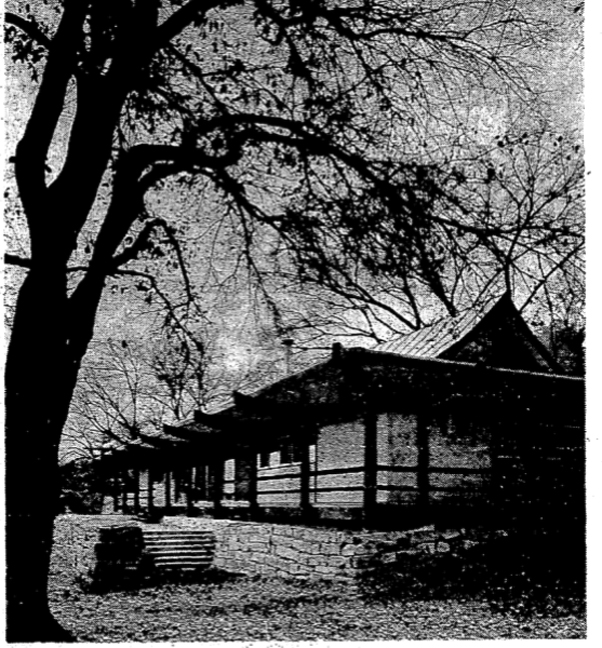

March 1967. Borrowed from the OWH archives.
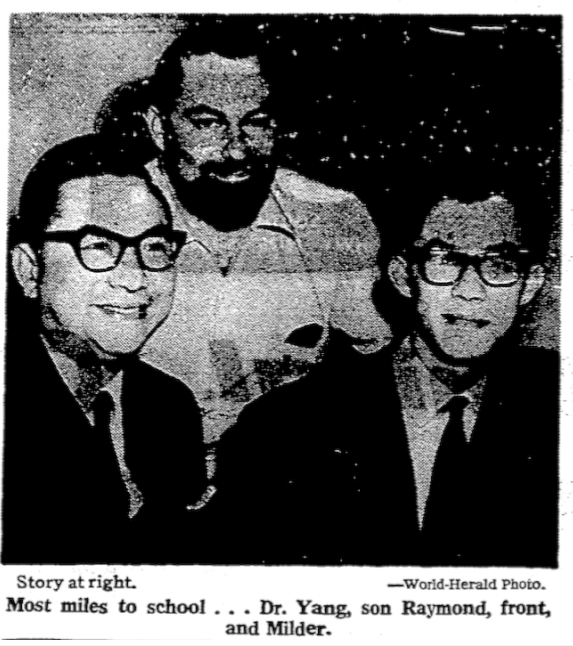
OWH Sept 10, 1967: “Myron H. Milder of 133 South Elmwood Road has Dr. Raymond Yang, Sr. and son Raymond Jr. (Creighton freshman) stay with he and wife. Friendship started 10 yrs ago. Raymond Yang, 18, started freshman year at Creighton. He’s from Hong Kong. Dr. Raymond Yang, Sr. and son arrived as houseguests of Mr. and Mrs. Mike Milder 133 South Elmwood Road, in a continuation of a family friendship, which started more than 10 year ago. It’s all due to Mr. Milder’s salesmanship.” Yang said Milder continued to talk up Creighton. The family decided son should take his pre-dental courses in Omaha. The busy Hong Kong internal medicine specialist has two offices, invited the Omahan to be his houseguest. A nice, casual, bearded Mike Milder with two of his friends, previously mentioned for his love of welcoming houseguests. 133 South Elmwood Road must have been such a gracious host and interesting topic of conversation in those days.
The Emily Milder Folio
**July 3, 2019 Addendum** I received an email from Miss Emily Milder, Mike and Ducky’s daughter. Emily would return to Omaha from California to take the reins of the family business as President of the Milder Oil Company. Hopefully we will hear more stories from her in the future. She very generously shared these images from the family’s private collection. They are so wonderful and I treasure these glimpses. Thank you so much!!

Mike, Jr. and Emily Milder by the front door to the house.

Emily and Mike on the bridge.

Adorable little Emily. Isn’t this just dreamy?
“My brother and I were the only Jewish kids on South Elmwood Road. The neighbors welcomed us and we would go Christmas caroling with all the families every year. Directly next door to us was the Saint Margaret Mary’s Convent. We would pick flowers from other houses in the neighborhood and ring the doorbell of the convent giving flowers to the Nuns so that they would give us a tour of the house. It was very spooky, but full of stained glass windows and very cool architecture. There were so many amazing homes on that street!”
Emily would share that she graduated a semester early from high school and left for college right away. She later lived in Los Angeles where she was a writer for episodic television and worked in film production. Emily moved back to town after the death of her brother, Mike, to run Milder Oil Company.
** Addendum of April 20, 2024
Incredible new photos just in of the Milder family in their wonderful home.
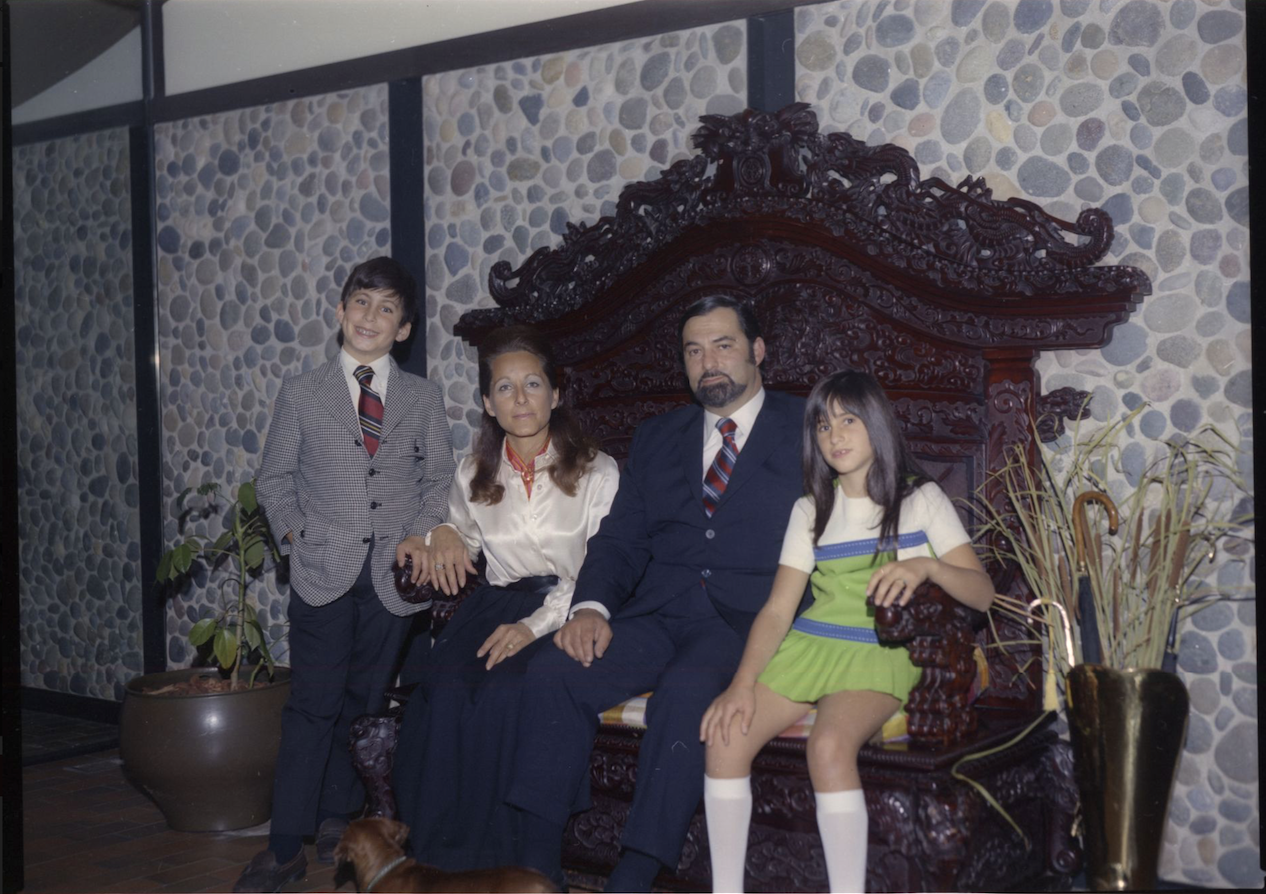
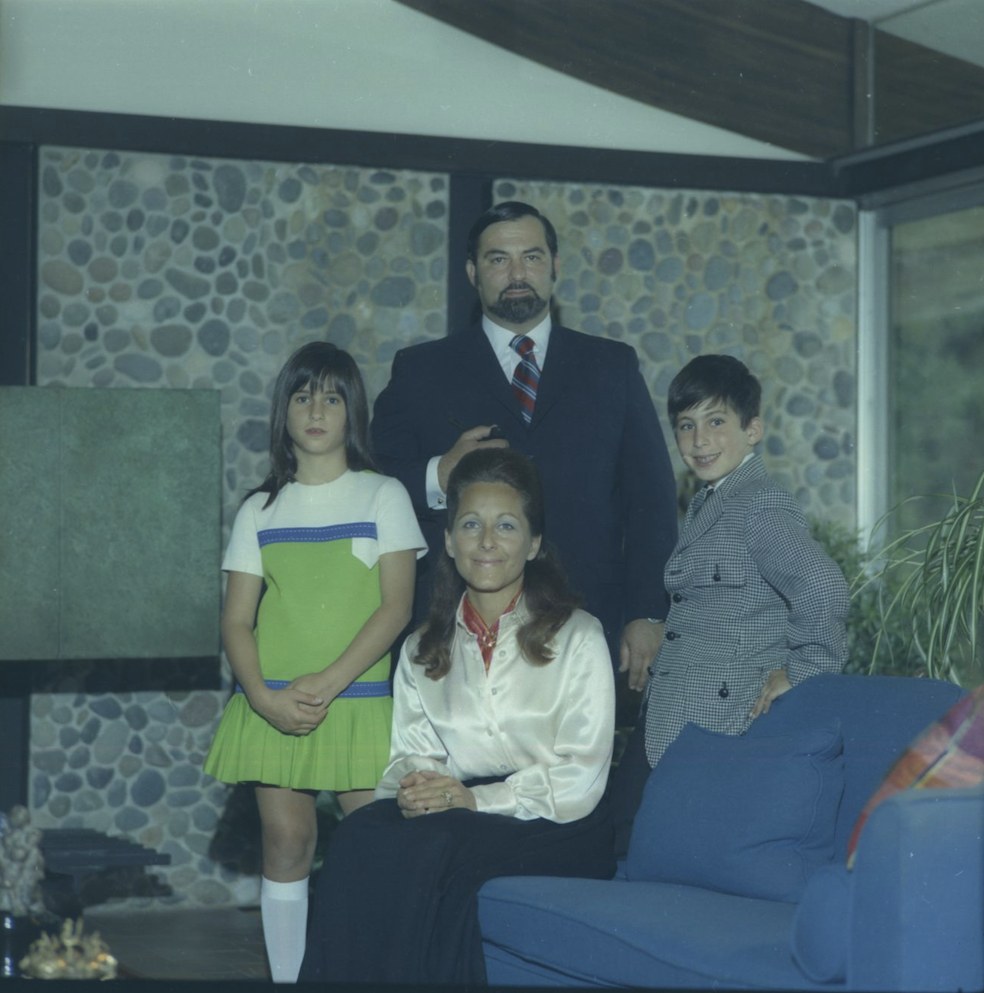
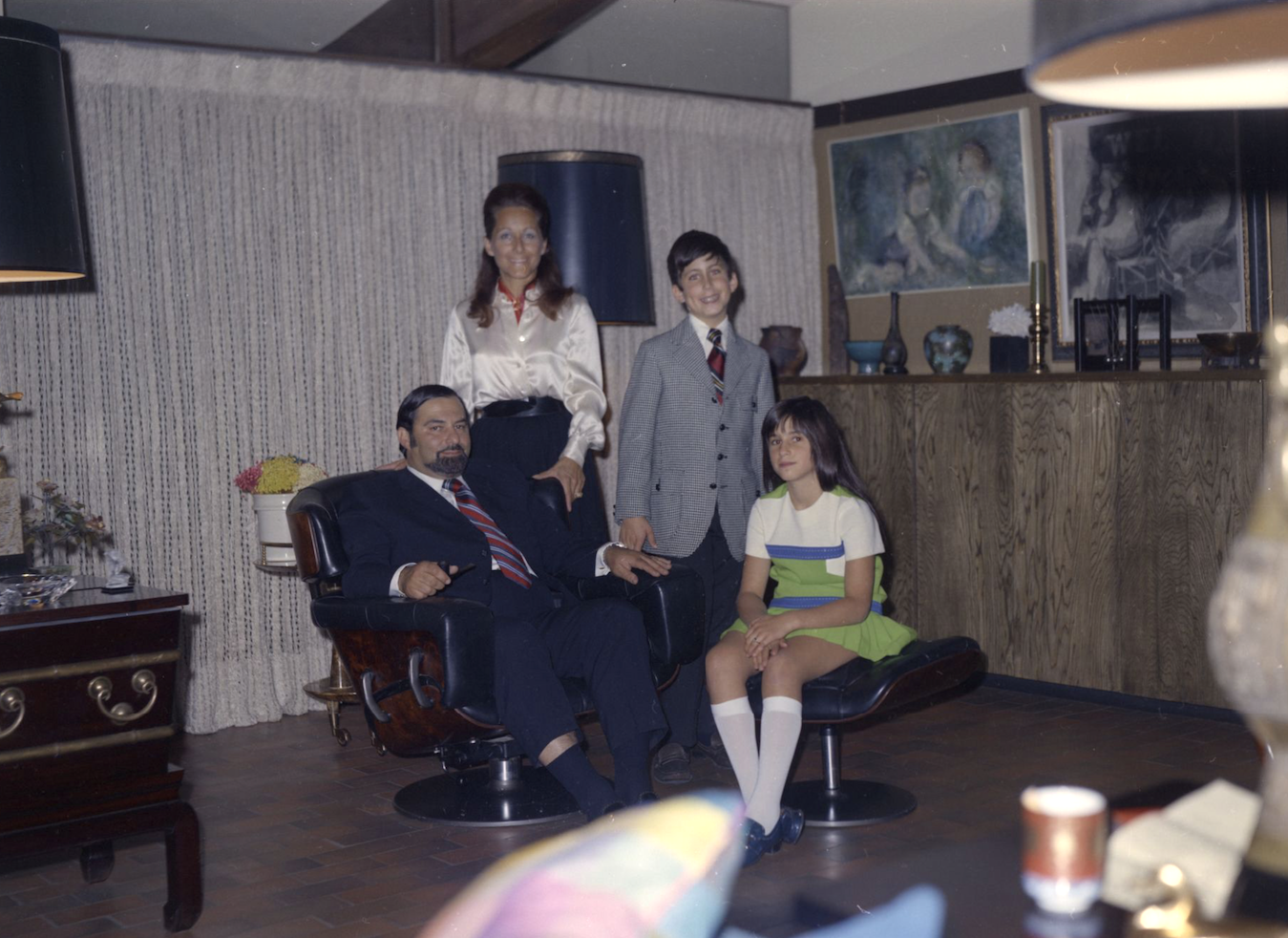
Photographer Donald Jack. The Durham Museum. 1970.

Part Two
The UNO Acquisitions
As I had made mention of earlier, I had been nail biting about “The Neighborhood That Disappeared” dossier for quite some time. For this reason, I will attempt to keep this Part Two succinct, as we will tangle in those obsessive knitting circles later. All you need to know for now is that the University of Nebraska at Omaha (although called Omaha University or Municipal University) had finally arrived on the 60th and Dodge Street scene and was looking to expand its campus. According to Tommy Thompson’s work A History of the University of Nebraska at Omaha, financial limitations continued to plague the Municipal University. In 1968 the president and Regents would succeed in merging with University of Nebraska at Lincoln (UNL) , hoping to get UNO on stable financial ground. Following the merger, UNO administrators were predicting a surge in enrollment. They were particularly eager in expanding for surface parking. Like the rest of Omaha, the idea was to Move West. (By now we have seen UNO move south of Elmwood Park into the old Ak Sar Ben area.)
The way I see it, the disquiet began for the historic Buena Vista Place neighborhood when Adolph G. Storz petitioned the Planning Board for rezoning of his mansion and six-acre estate at 6625 Dodge Street. Not the Storz mansion in Fairacres, not the Blackstone one either. A stone’s throw from Buena Vista, the Storz residence, as well as other Dodge facing mansions in the area, were the stately sentinels of the hidden Buena Vista. Storz’s rezone would have allowed the Chi Omega sorority house to take up the private residence as their chapter house. Granted, Storz’ stipulation prohibited the property from being “changed” for 20 years. These are my personal thoughts: The Storz proposal opened the door to UNO and made all of the gracious homes, acres of tall trees and homeowners, vulnerable. Since I have been writing this website, we have all seen these seemingly minor actions within neighborhoods have large unpredictable repercussions.
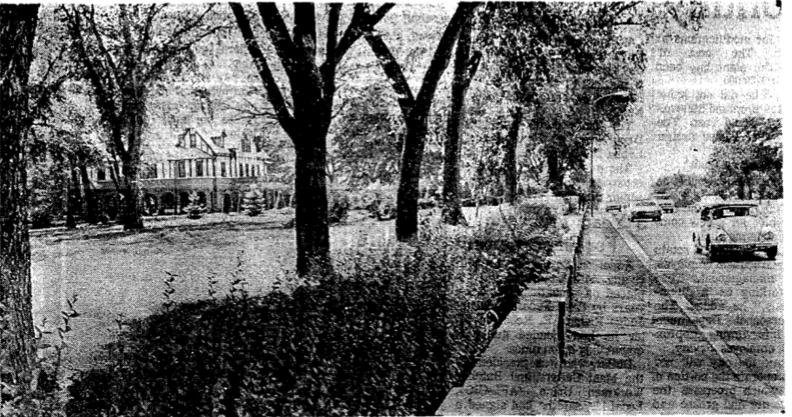
Storz Mansion. 1970. Photo borrowed from the OWH archives. For the record, the Fairacres Residents rightly rose up and opposed the sorority’s plan, whereby the City Planning Board rejected the rezoning. But the door had been opened to suggestion and further examination. By 1970 a $1 million appropriation for the Storz land acquisition was authorized by the Legislature, later shot down the State Supreme Court. The Cooper Foundation came forward and gave UNO money to seize the Storz opportunity. The phrasing on these monies mysteriously changed soon after and the purchase was attributed to the “University of Nebraska Foundation,” a privately financed organization, for eventual resale of land to UNO. The Storz grounds would be used for parking, the mansion used for offices.
The Milders’ Homes and the Ensuing Fight
Two more houses were purchased by UNO in 1971 and by then Buena Vista was a virtual landslide. As it turned out Mike Milder had been entertaining negotiations with the Nebraska Board of Regents. I was surprised to find both Hymie and Mike had sold their properties to UNO in late 1971. But it would appear that the land was going to be taken by eminent domain in the near future anyway. The Regents bought the Mike Milder house and 1.94 acres for $245,000, a goodly chunk o change in 1971. Furthermore Milder negotiated to stay on in his house at 133 South Elmwood Road for up to three additional years. Gov. J.J. Exon would say that prolonged delay of developing Milder’s land into surface parking (by letting them live in their Polsky home) was a “misuse of state funds.” Hansen, chairman of the board’s finance committee, said the sale agreement provided for “immediate availability” of part of the Mike Milder land for parking. Is anyone else wondering why a large, proper parking garage wasn’t being planned instead of all of those surface lots?
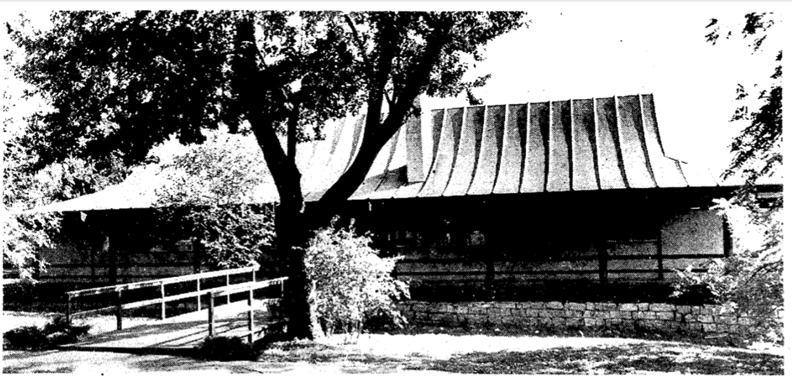
Milder Home. Image from the OWH October 3, 1971.
A curious turn of events was spied in the newspaper, dated October 1971: A. J. Treutler, an Omaha advertising man protested the UNO purchases by sending a letter to President Nixon. Treutler asked for a federal investigation of the UNO purchases by the Office of Emergency Preparedness and the immediate negation of the purchase agreements all because he thought these were “inflationary prices” paid for the expansion. He also charged that UNO agreed to allow Mike Milder to remain in the house he sold to UNO for three years, “simply by paying the taxes thereon.” Treutler’s argument was that “the property should be rented for $1,000 a month.” I will get more into this debacle when I cover this whole expansion in the future. One’s thinking might be that if a government system is going to take over one’s neighborhood by eminent domain and proceed to knock down all of the houses for parking, one might fight like hell to get every last cent out of the deviant plan. One just might think along those lines.

Article image from the OWH archives. Dec 1971. Board okays the UNO parking 3.16 acres at 105 South Elmwood Road (Hymie’s house) to be converted to surface parking. Hymie and Ella Milder’s meandering country property was to be new home to $5.1 million library, to be built west of the Performing Arts Building.
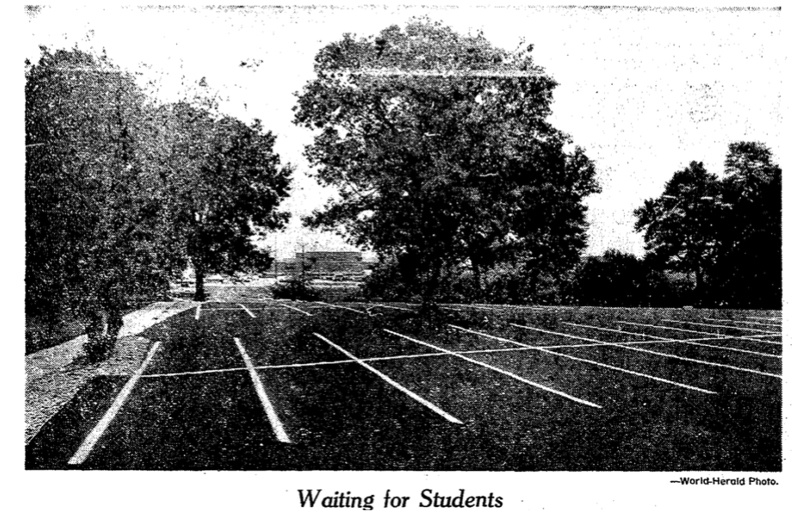
Photo from the OWH archive, Aug 1972. The once great Morris and Hymie Milder home and grounds at 105 Elmwood Road, were gone, covered by a new blacktopped parking lot. UNO purchased the land for a cool $190,000 and razed the Milder house. The lot added 300 spaces for student and utilized the 64th Street entrance off Dodge. For their part Hymie and Ella Milder would smartly move straightaway into the Swanson Towers, central focus of our investigation **. Simply Brilliant. Sadly in August of 1980 I would find Mr. Hymie Milder passed away from heart failure.
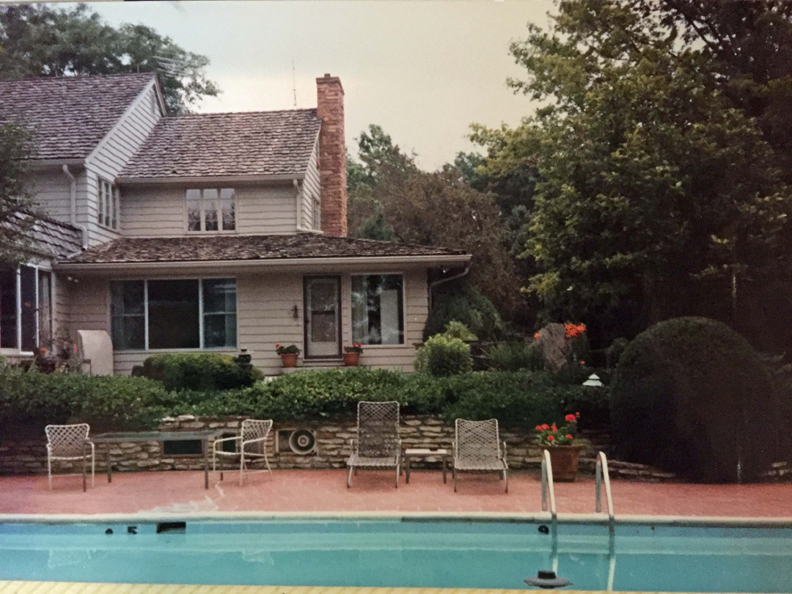
And now let us play the Japanese Gagaku orchestral court music…dramatic and somber. Mike and Ducky Milder would move out of their Polsky dream home in 1974 or 1975. It would have made me Sick to my Heart, even if I could have made off with all of that cash. By 1975 I found the family had transitioned into 116 South 92 Street. Here is a photograph of the original 116 South 92nd, shared by daughter Emily Milder.
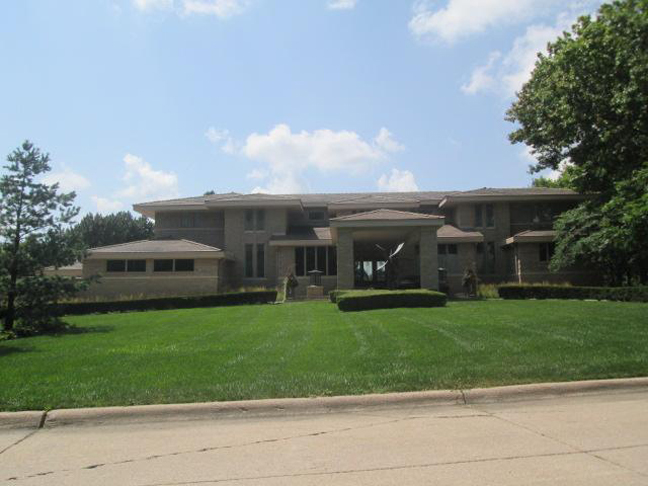
The Milder home is no longer extant; 116 was razed at some unlucky stage and now this behemoth 9527.0 sq foot residence arose sometime in 2002.
Part Three
The Art Gallery Life
The fall of 1975 opened the UNO campus and its students to a whole new experience: the once private Mike Milder family home and grounds had been refashioned into the public University Art Gallery. The residence also housed the School of Fine Arts administrative offices as well as Harry Duncan’s nationally known Fine Arts Press, located in the home’s lower level. Upon learning this, suddenly a handful of memories would break free in my mind. Father of Miss Cassette was also friendly with fellow artist, Harry and I remembered going to watch him work in the basement! Maybe there are other detectives out there who had a similar experience with the buiding? I would love to hear from you. Apparently Jerome Birdman, the Fine Arts Dean, had converted the Polsky award winning structure into the school’s art gallery. The glorious MCM windows were covered to protect the hanging art shows, among other changes. Many believe Duncan’s graphic designs and the Fine Arts offices suited the distinguished architecture of the 1965 Milder House. I am just so glad someone at UNO saw its worth so the home could be saved and utilized. It was around this time period that a young Bing Chen would stop by the art gallery, when passing to admire the architecture of the unusual structure.

Photo from the OWH archives. Oct 1975. Fine Arts staff members, Tim Anderson and Mary Smith were walking by the Polsky home. Their offices were inside. Lucky Ducks. I love this strange photograph. Like ghosts passing across a theatre screen.
Art Gallery Photo File
These images were taken in the late 70s through the 80s. All photographs courtesy of the UNO library archives. I am not entirely sure but Les Valentine might have captured these images in his documentation of UNO’s westward growth. I am grateful for this view of the past. One can see the mature trees that once encircled the home and the buildings and access roads that grew up around it.

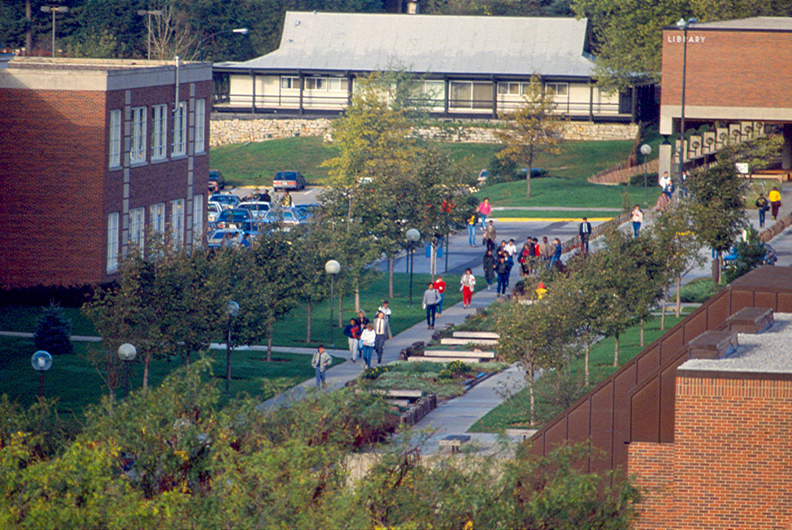

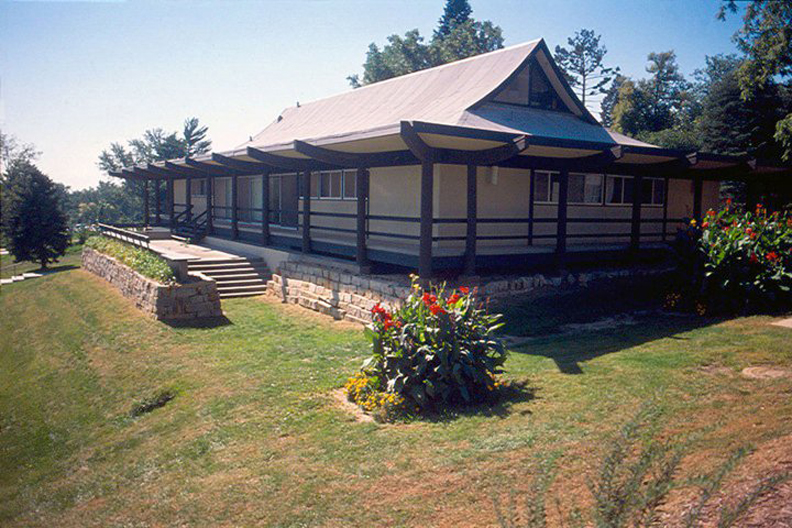
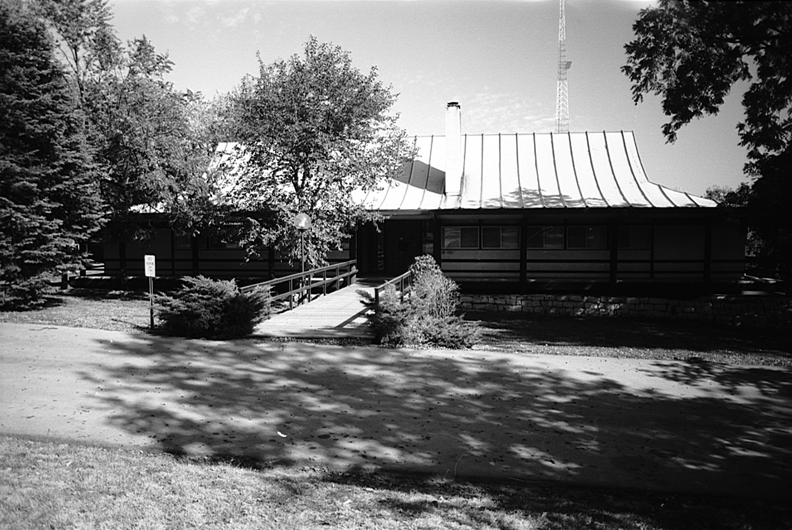
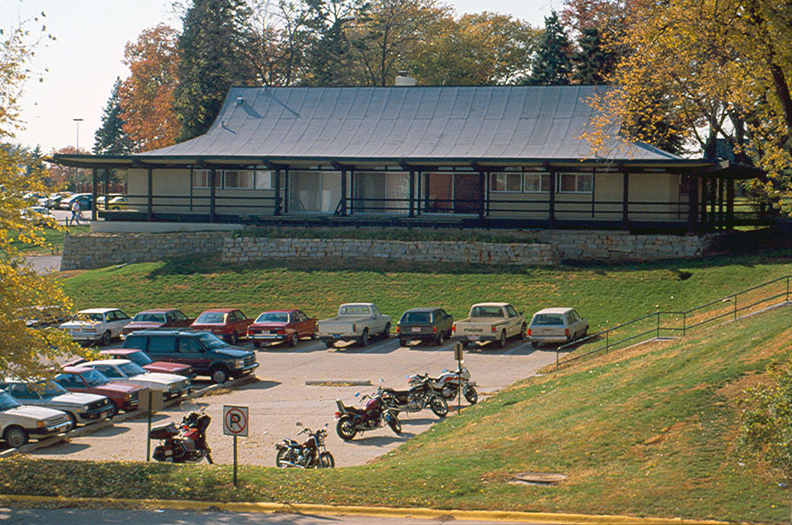
Of interest, a UNO art professor shared this sticky clue: “I had my office and classroom in the basement of this building from 1985-1990 before it was moved from the UNO campus. I loved the building despite the problems with mice. The Grounds Division stored grass seed in the attached garage so the mice had a field day.”
New Fine Arts Center
The fortuitous shocker came in 1989 when David Shrader, then Dean of College of Fine Arts announced his dreams of a 54,905 sq ft fine arts center on the UNO campus. I did not live in Omaha at this time and knew nothing of this history. A $11.4 million plan for the center was approved by legislature, sending the dream machine in motion. It was reported the former Mike Milder home would be razed shortly. Or at least that was the original plan. Shrader said he was “tickled” that the new building was approved. For those of us who have spent time in this mammoth, neutral structure, Shrader’s soon to be feather in his cap was-is a real headscratcher. But I have seen many Omahans get all giggly about perceived progress: large, new buildings that have silly, incongruent, minuscule windows and depressing, wavering deadspace once inside. With an out of state architect selected, construction reduced to 48,815 sq ft and a ground breaking ceremony in the fall of 1990, Shrader later stated, “The (Milder) house will either be razed or moved elsewhere in the city.” There was a new tone of optimism.

The Weber Fine Arts Building on the UNO campus is now located where the Milder home once stood. Oliver Pollak and Les Valentine’s University of Nebraska at Omaha dated the opening of the building to 1992 and that it was later christened the Del and Lou Ann Weber Fine Arts Building in 1998.
Part Four
Saving the Milder House
In the early 1970s, Bing Chen regularly crossed paths with the Milder home when walking campus. Chen had been a UNO professor of electronics engineering technology since that time and directed UNO’s nationally known Energy Research Test Facility. “I had always thought it was a wonderful home,” Chen stated in a 1990 news article. When he heard his dream home, the UNO art gallery, was to be razed, Bing and his wife Georgianna would pay UNO a reported $2,500 to save it from the wrecking ball. They would embark on a colossal undertaking in arrangement to move the Milder home from the UNO campus.
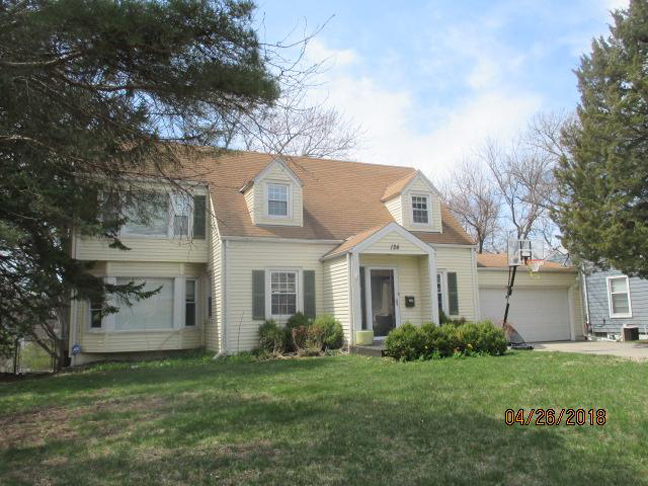
124 South 69th Street. Photo courtesy of the Douglas County Assessor site. I would trace newlyweds, Bing and Georgianna Chen, to their cute house at 124 South 69th Street–oddly just a few houses away from Mike and Ducky Milder’s newlywed home. The Chens were obviously fans of the Cedarnole neighborhood. But there was another thought in mind as they tried to secure a suitable lot nearby their newly purchased Milder Home. “It had to be within a mile of the university because the cost of moving the house was by the block,” Chen said. “There were only three possible locations, and this one (312 South 70th Avenue) was the most private.” Wouldn’t you love to know what the other two options were? After gaining acceptance among the Cedarnole neighbors, the moving plans began. Scrib’s House Moving Inc quoted it would take $20,000 to have the 150-ton home safely moved 10 blocks in 15 and a half hours to its current location at 312 South 70th Avenue. At the time, Chen told the paper he believed another $130,000 would preserve the historic architectural structure and make the home more energy efficient, using passive solar energy—the focus of his passionate research. More on that later.
I wondered how it was that the Chens came to own the nearby 312 South 70th Avenue property and why there wasn’t already a home built on the lot?
History of the 312 South 70th Avenue Property
Lot Five, Block Eleven in the Cedarnole Addition neighborhood gave me quite a go ‘round when digging into its history. It is very near 70th Avenue and Farnam, on the west side of the road. I was suspicious of this address when I could not find a single juicy detail from any of my usual sources.
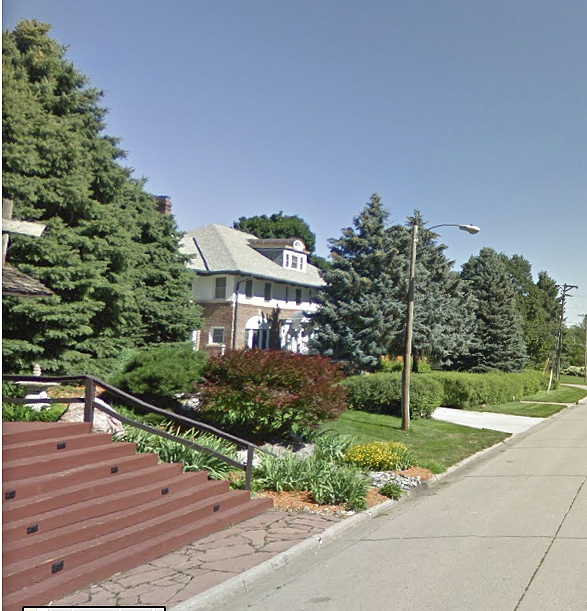
308 South 70th is seen peeking from behind its luscious trees. It is one door to the north of the Milder-Chen home, on the corner of 70th Avenue and Farnam. This shot is borrowed from Google Map. 2018.
I estimated the original home of 312 South 70th Avenue, the address that the Milder-Chen house is now situated at, to have been built between 1927-1929, as all of the surrounding “older” homes were from the late 1920s. Cedarnole is mostly chock full of fantastic 1950s Mid-Century Modern Ranches as well. These older, original homes are sprinkled amongst the Ranches and are fun to look for. The glorious, sprawling property at 308 South 70th (one lot to the north of the Milder-Chen house) was built in 1925 and stretches out to Lots 1, 2 and 3. You must go by it.
Omaha Famous Ruth Fay Harper and her husband Hugh Harper would play big roles in one of my investigations for the book. From that pearl dive I would learn the H. H. Harper & Company firm developed the Cedarnole Addition, among other fine Omaha residential districts. I discovered the original deed for Lot 5, indicating the Harpers sold this particular lot of Cedarnole to a Platte Valley Land and Investment Company in late December of 1927. The Platte Company then sold the lot to James Fadden in December of 1928. Mr. Fadden sold it to Herbert Fischer in April of 1929, who then sold back to Platte Valley Land. This series of transactions indicated that, possibly, Fadden and Fischer were partial owners of Platte Valley Land and Investment. Both the deed and the World Herald gave hint that the Platte Co. sold the lot to C. W. Cunningham for $7,000 in 1932.

Image from the OWH Sept 1932. I often will get tangled in these labyrinthine clues that I find fascinating. I cannot help but include the things I love. And maybe, just maybe, no one else does but sometimes it later comes full circle…so I will recommence at another depot for now.
Prominent Chester “C. W.” and Lois Kearns Cunningham and their son, Jack, were Society People who appeared to routinely move from one fascinating Omaha home to the next. They were often summer guests to the holiday cottage at Lake Okoboji of Mr. and Mrs. Lee Huff of the https://myomahaobsession.com/2018/10/29/the-secrets-of-302-south-56th-street/investigation. After graduating with a Civil Engineering degree in 1915, Cunningham served with US Army in France, later joined the Pittsburgh-Des Moines Steel Company and arrived in Omaha in 1924. I would discover Mr. Cunningham was regarded as a long time Omaha engineer and construction company executive. His larger projects involved the Martin Bomber Plant in Bellevue, the Granby Dam in Colorado and the Bull Shoals Dam in Arkansas. The Cunninghams would call 70th Avenue home until 1935. I venture to say that they built the home. Cunningham certainly had the connections and resources to do so. Interestingly the family had already moved on from 70th in the fall of 1935, under foggy conditions, choosing to reside instead in the Gold Coasts’ fine Tudor Arms Apartments. They rented their Cedarnole home to newlyweds, the McMartins–one month later, selling them the spacious abode. Of note, when 88 year old Chester Cunningham passed away in 1980, he was living in the https://myomahaobsession.com/2019/03/24/i-want-to-live-in-the-swanson-towers/Swanson Towers.
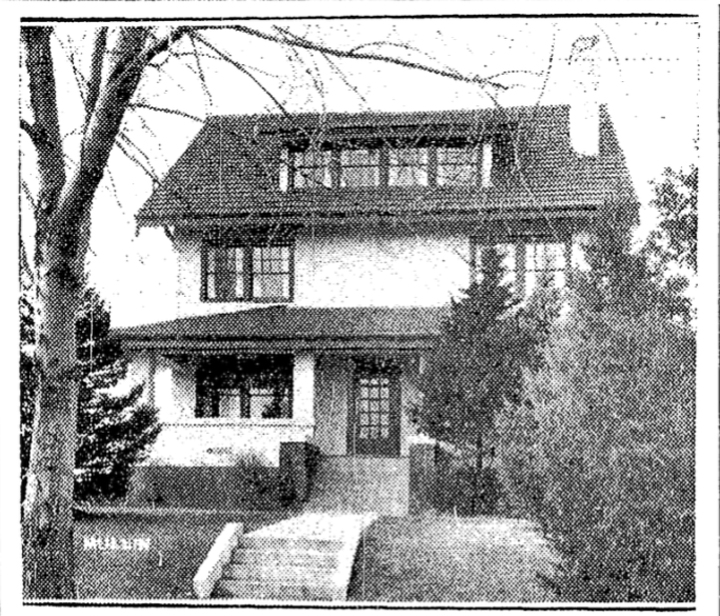
Photo of the original home at 312 South 70th Avenue from OWH archives. 1935.
My copy of Deed Record No. 634 revealed Dr. William Joseph McMartin purchased the “C. W. Cunningham home” in November of 1935. I would later find a newspaper article further elaborating that the home was twelve rooms situated on a landscaped tract of one acre. W. J. McMartin was a prominent physician and surgeon, a member of the Creighton University School of Medicine faculty.
In January of 1949 William H. Barrie and wife, Jayne had purchased the home. Soon after Cedarnole would change its tone entirely as young families began building Mid Century Ranches up and down the blocks. Presumed 81 year old Mother Carrie Barrie, (I am not ribbing you about that name) also lived in the home by 1954. Another warranty deed of September 1957 proclaimed Hugo Schnabel, Jr. and wife Joan P. Schnabel had acquired the property. But it wasn’t until I found the gorgeous Mrs. Hugo Schabel in a late 1950’s advertisement that I would learn there had been another address for the Cedarnole lot of our query. Mrs. Schnabel was shown, along with her home address, as to lure other women into shopping the exquisite department stores and boutiques of Downtown Omaha. The accurate historic address, as it turns out, was 316 South 70th Avenue. I am not entirely sure when or why it changed. For all I know, it might have changed when the Chens moved the Milder home to the lot.
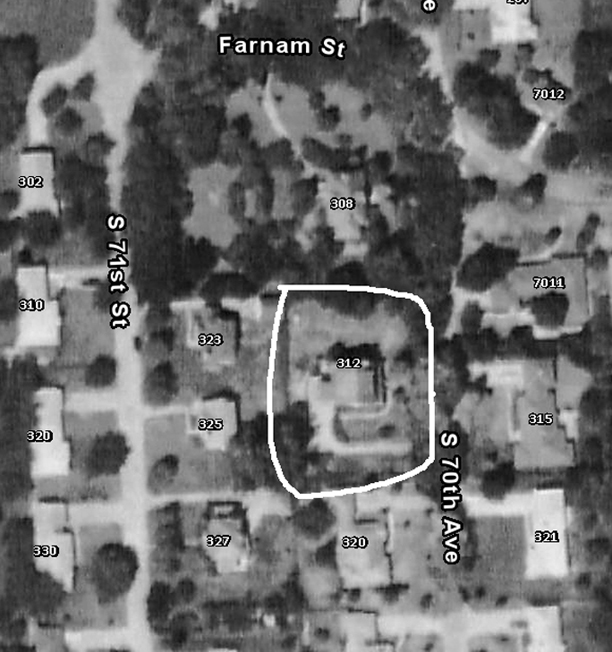
1962 aerial photo borrowed from the Douglas Omaha GIS website. 312 South 70th Avenue is circled, revealing a large home, drive and grounds.
1965 marked the year Arthur Lee “Art,” Jr. and Teresa Bloomingdale had moved in. The large home must have been a raucous affair, as the couple had ten children in 12 years. Interestingly Teresa Bloomingdale was a local journalist with the Omaha World Herald, working from home after her initiation at the weekly Metro newspaper in 1972. She would later sell her popular domestic column to the Catholic Sunday Visitor, circulated throughout the world. She would go on to write well-received books of the same family oriented themes. Many of us remember the terror of the Omaha tornado of May 7, 1975–one of the most destructive tornadoes in U.S. history. Unfortunately the Bloomingdale’s home was one of many destroyed in the tornado’s path. With it went three years of Teresa Bloomingdale’s writing archives, in the days of pre-digital files. Ugh.
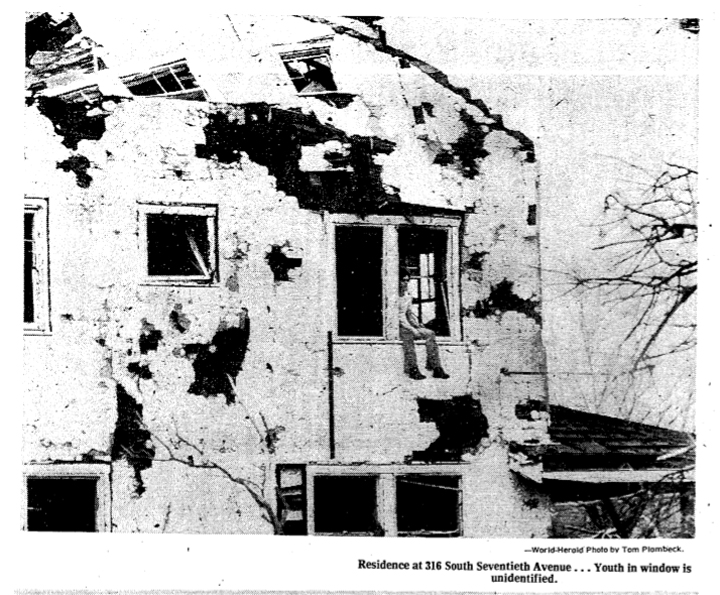
May 7, 1975 OWH photo of the Bloomingdale house. So scary. If you were a little kiddie at the time or older, I am sure you recall this part of town was hit hard by the tornado. My review of the Omaha City Directory from 1976 down at the W. Dale Clark Library would show addresses on South 70th Avenue at 115, 124, 308, 320, 321, and 328 were all sadly “vacant” in the year after the tornado. The 312/316 address was wholly obliterated from the book. The 1976 directory revealed the large Bloomingdale clan had packed it up and relocated to their new home at 2044 South 86th Avenue.
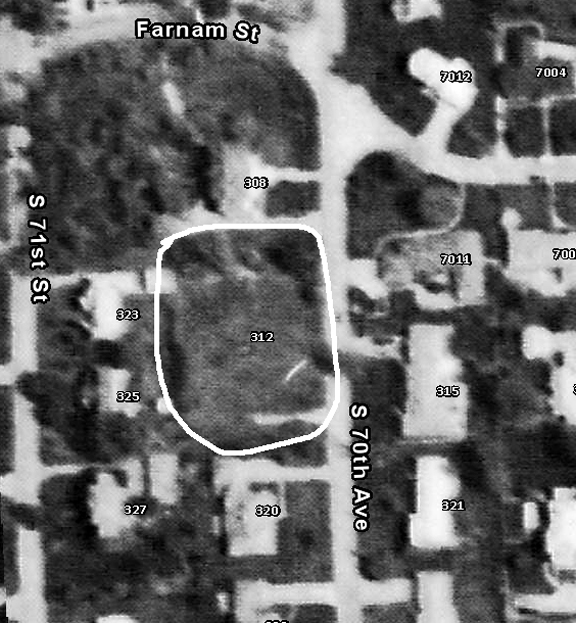
1982 aerial photo borrowed from the Douglas Omaha GIS website. One can see the empty lot years after the tornado.
The sad property was now an empty lot. I shouldn’t judge it as sad—the local shorties must have had a jolly good time playing on the large lot. A kick ball field? A camp of forts? Scouting adventures and wheelies off cliffs. Who knows what fun was had? In August of 1976 the Bloomingdales sold to Herman and Rosalie Cohen. The Cohens lived nearby in the spacious Ranch home at 323 South 70th Street. As founder of the Greater Omaha Packing Company and the Greater Omaha Realty Company, the Cohens had a number of real estate holdings. It was not unusual that they would have bought the empty lot as an investment but almost two years later, Herman Cohen died. The lot went into Rosalie’s name by 1981. (As an aside—did I see a “WD” or a “MD” on that Cohen deed? A warranty deed is normal as property, land and building, exchanges hands from owner to owner. An “MD” could have stood for a Mineral Deed, applying to rights under the land itself, as there was no longer a house. I might be wrong about that.
When Rosalie died several years after her husband, her will divided her estate among her children and several charities. Daughter Florence C. Davis inherited 316 South 70th in October of 1985. The property continued to sit vacant. For the record Florence Davis was ecstatic about selling Bing and Georgianna Chen her vacant lot. “At last, I can do something to save one of the homes that should never have been torn down for UNO expansion,” Mrs. Davis stated in the 1990 OWH. Apparently Davis had regretfully sold the university another home five years ago to make way for campus expansion. My Oath, Sherlock! Was it possibly meant to be?
The Actual Move
There was much work to be done. I had never considered the negotiations for moving one’s home. The Chens would obtain zoning variances for their new home to be legally placed on the 70th Avenue lot. David Scribner, owner of Scrib’s House Moving Inc. came highly recommended and was of great help in the planning phase due to his experience. Utility wires would have to be temporarily disconnected, raising of traffic signals, and trimming of overhanging tree branches in order to move the Polsky Wonder down the middle of Dodge Street. West Omaha went without cable for a few hours. Even new Cedarnole neighbors agreed to have trees cut down in order to wedge the home into position. It was like the Little House that Could. Omaha had to see it through.
“At 5 a.m. one Sunday morning in July 1990, the house lumbered onto Dodge Street, coming to a halt at its destination 15 1/2 hours later with only a couple of broken beams and windows and a few stress cracks,” read the OWH article. I was so very happy to read of these details. The following photos were borrowed with permission from the UNO libraries’ archives. Again it is a possibility that Les Valentine may have captured these images for us. If anyone has photos they would like to share of the Milder-Chen home being moved down the middle of Dodge, please let us know! Fascinating to imagine the sounds of a home being moved.
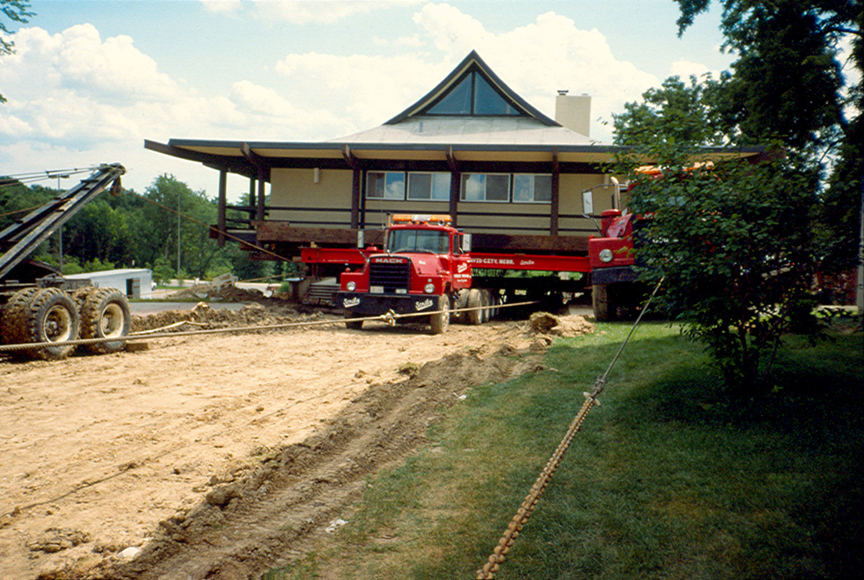
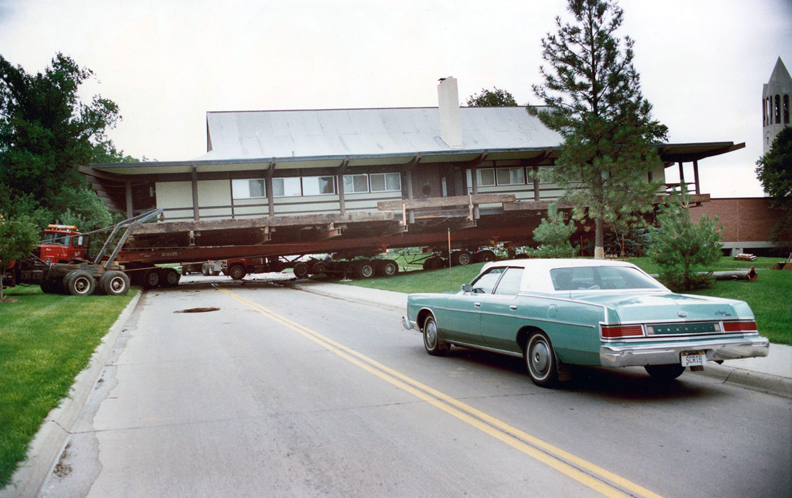
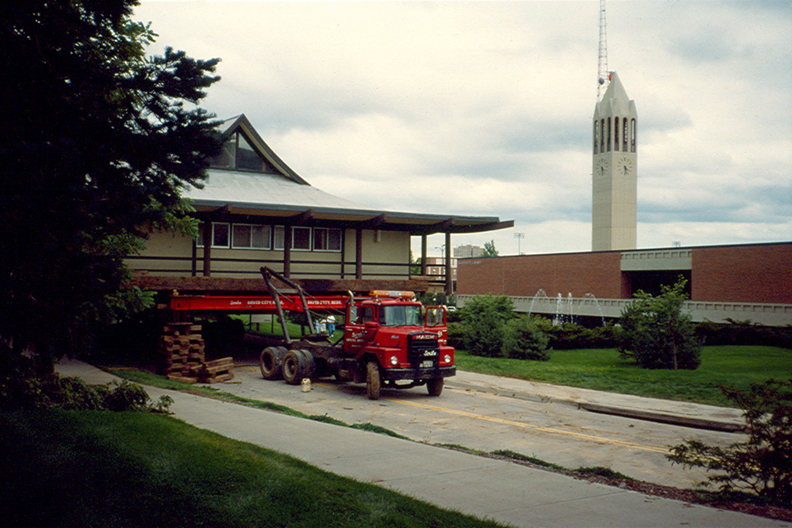
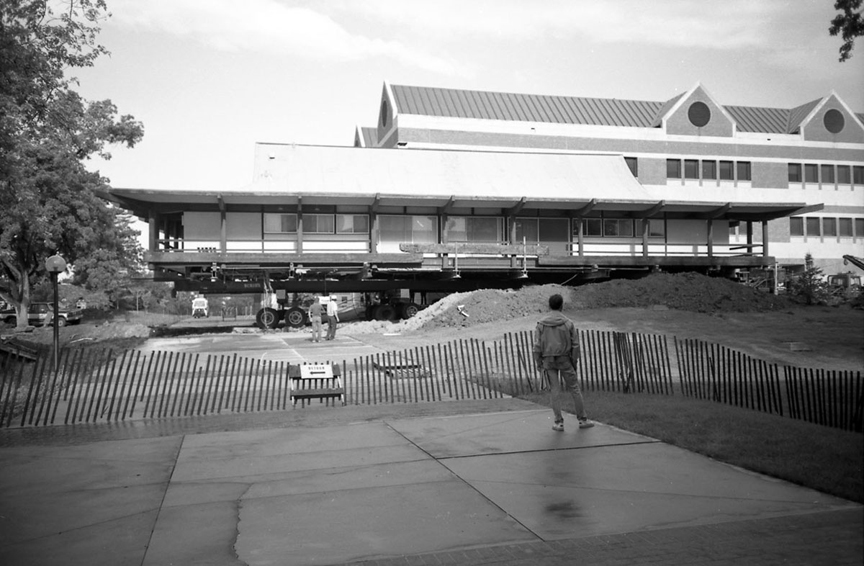
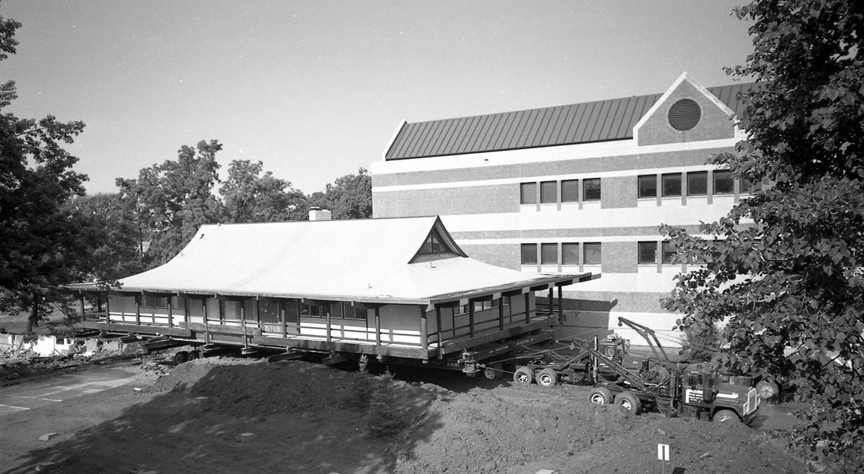
Part Five
The Home has a Home
Dr.Bing Chen had already laid new footings on the vacant lot. Once the home arrived, foundation walls would be built up. In line with his passive solar research, Chen would move the garages from under the kitchen to the side of the house now facing 70th Avenue.
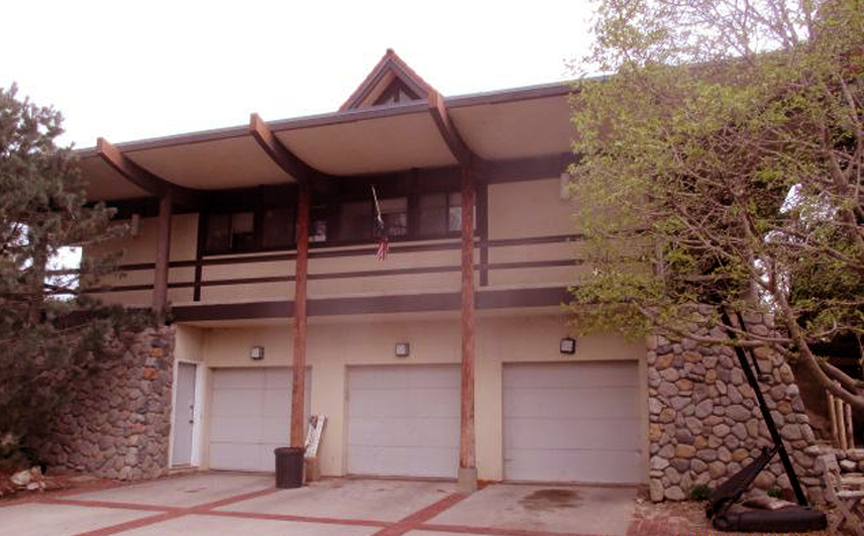
Photo borrowed from the Douglas County Assessor site. Eastern elevation of the home, 70th Avenue facing side.
“We rotated the house clockwise 90 degrees from how it sat on its original site so the large windows along the living room and master bedroom would face south to obtain passive solar energy. Large windows also have been installed on the lower level south side of the house.”
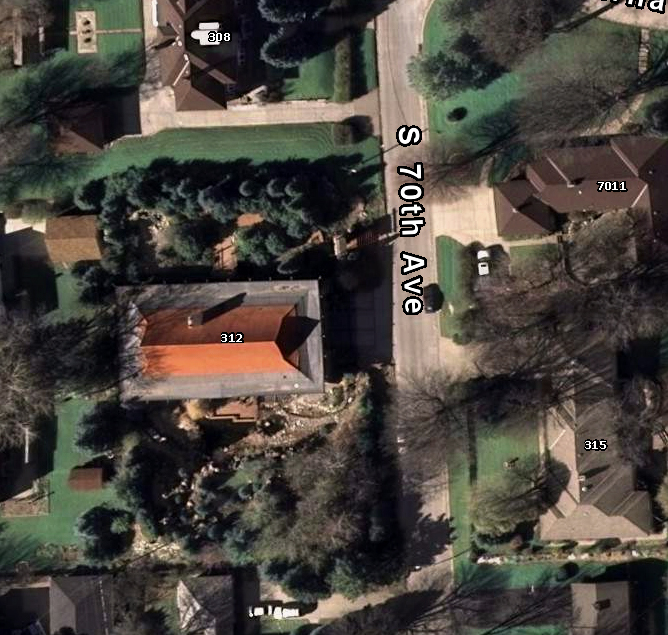
2007 aerial photo borrowed from the Douglas Omaha GIS website. 312 South 70th Avenue now has a wonderfully brilliant red tile roof. The extensive garden is shown to the south side.
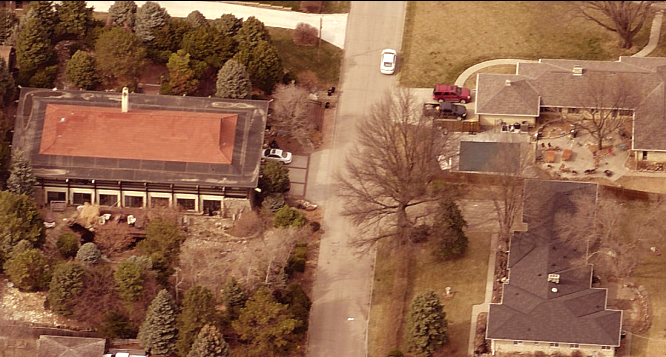
2018 aerial photo borrowed from the Douglas Omaha GIS website. This angle gives a good idea of the wrap around balcony with the view the family has over their garden.
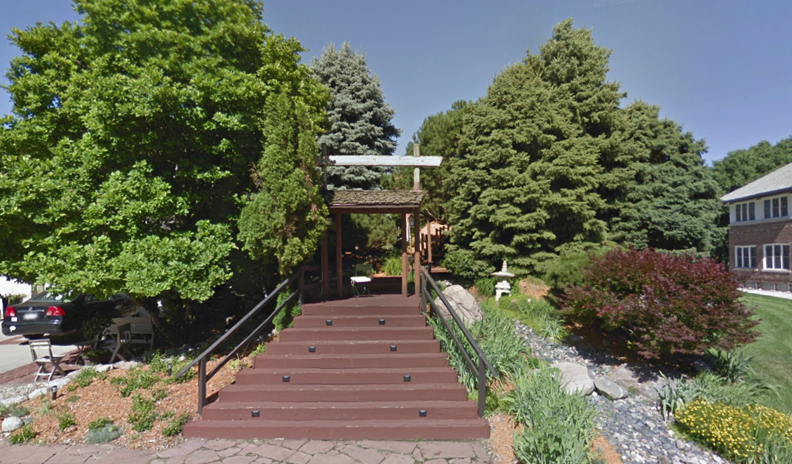
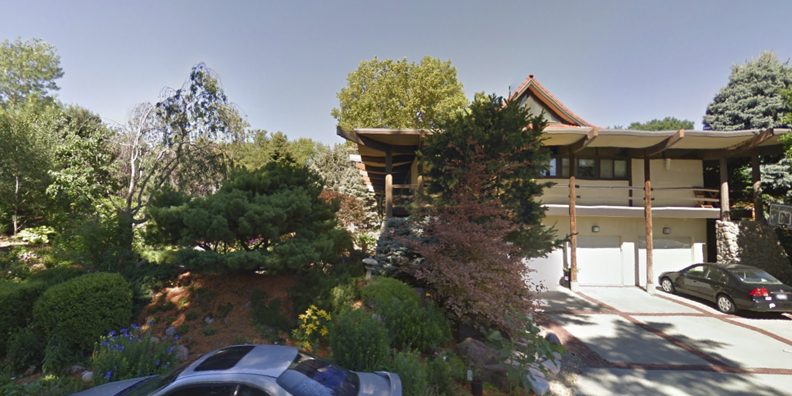
2018 photos from Google Map show the eastern most 70th Avenue view. Pure Glory.
The Milders’ balcony, which ran around part of the home, would be extended around the entire home. The Chens planned to integrate Polsky’s original small bridge that once led to the home’s entrance. Currently gorgeous stairs can be found on the eastern most side, leading over a bridge (is this the original bridge?) to a large entryway on the north, hidden by rows of evergreens. This was also by protective design—a proper northern shelterbelt. Apparently behind the enshrouded veil of greenery, there are stream beds, waterfalls, upper and lower ponds, walking trails, a forest glade–each magnificent spectacle works double time serving in both form and function to the whole as they cool the house in the summer and warm the house in the winter. The experience must be an oasis of the senses.
Daughter Emily Milder would visit the Bing Chen family at some point in the 1990s. Interestingly, the Chens asked why there were no closets in the home? Emily did find one original walk-in closet in what had been her brother, Mike, Jr.’s old room. Emily recalled the Chens hanging their clothing from movable racks in the bedrooms, with no closets to speak of. Apparently when the Polsky original became the UNO Art Gallery, the university covered all the walls with wallboard to create more space to hang the artwork. In the original long hallway to the bedrooms there had once been tons of closets with accordion doors. In every single bedroom there was a wall of these closets that had been covered over, she explained. Emily noted the accordion closet design is viewable in the Julius Shulman photo of her bedroom.
When the couple was preparing the home, Dr. Chen announced plans to move his parents into the Pagoda styled house, hoping to create a full basement apartment. They also wanted to relocate Georgianna’s folks into the home later, as well, their goal to raise their children with the benefit of their grandparents’ wisdom. I was so happy to find the couple had a baby boy that first year fulfilling their dreams of the extended family circle.
My Stakeout(s) File
I am sure I not the only one to make Strange Pilgrimage to this home, now refashioned into something even more fabulous. A pure Chen Creation. The following photos were from different years and seasons, hopefully depicting my overall dream perplexity with the Inviting meets the Unrevealed Feel. For as much as I love obsessing about beauty shared right before our eyes, I put Secret Beauty at paramount significance. Miss Cassette gives the Chen property an A+ in every season.
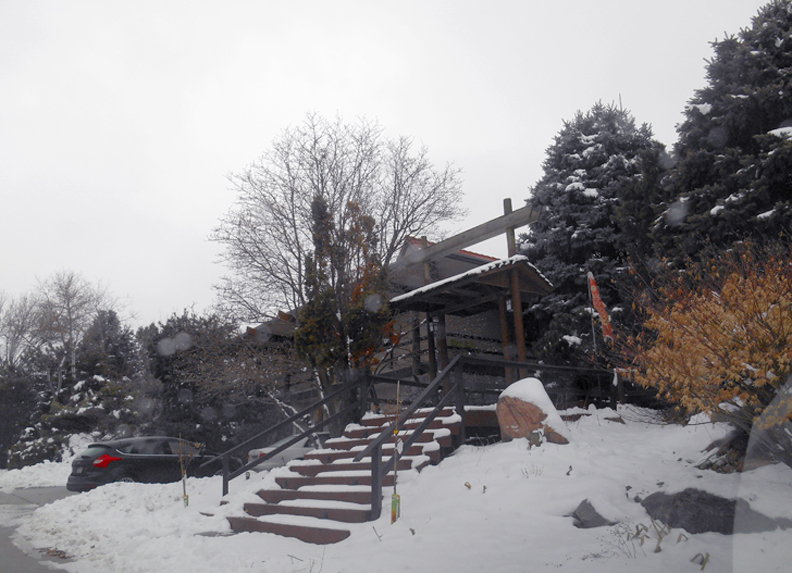
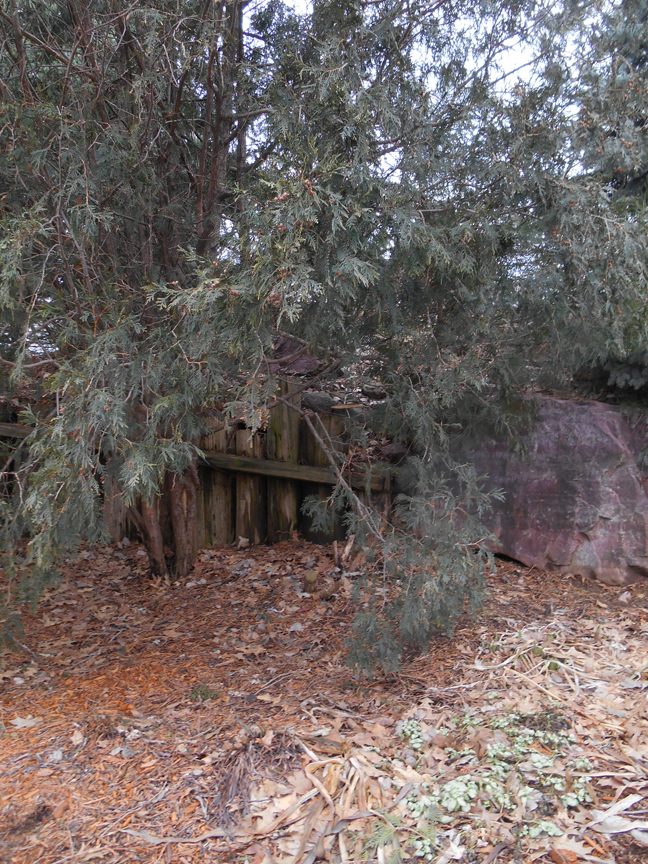
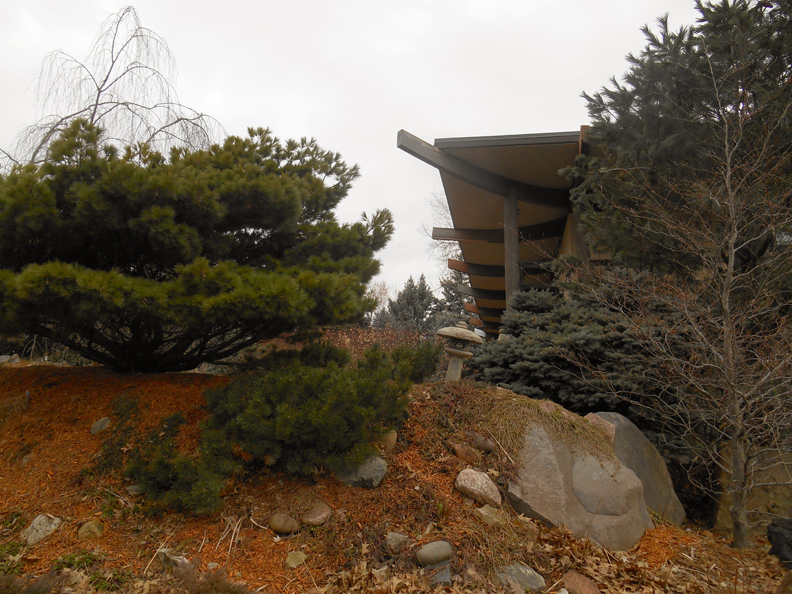
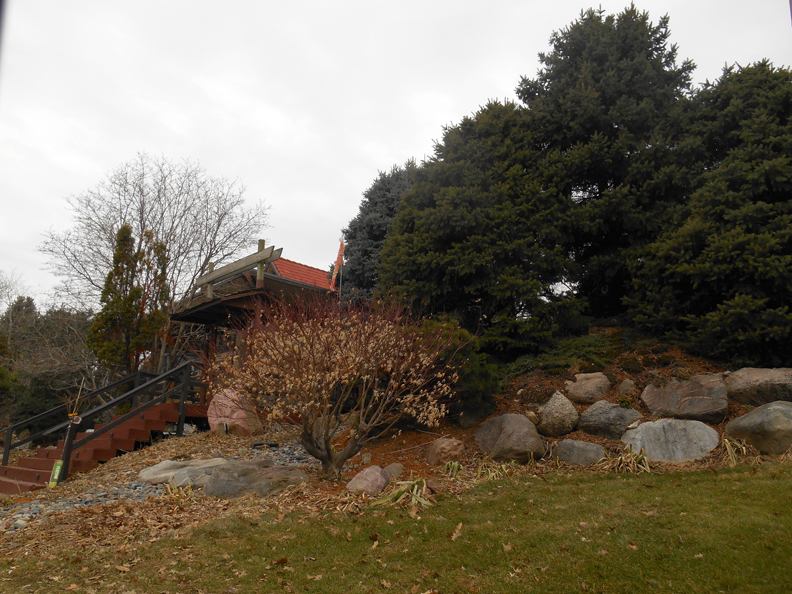
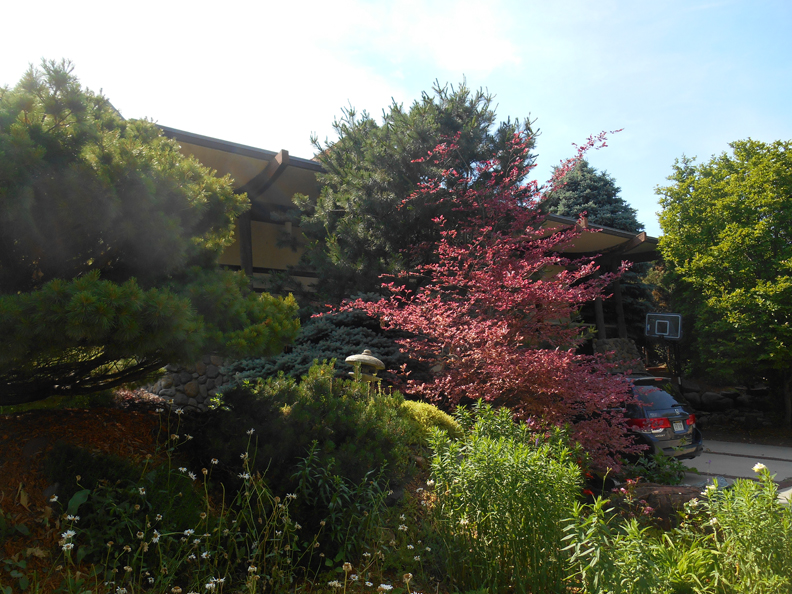

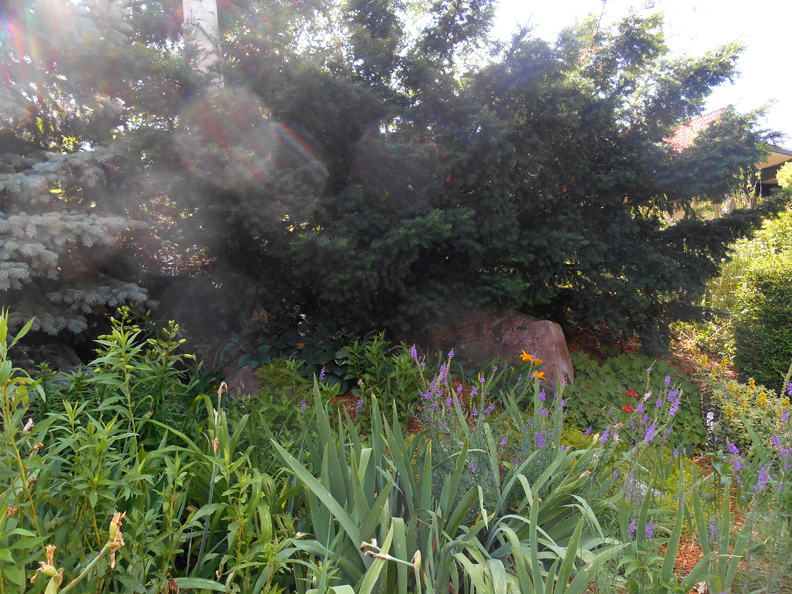
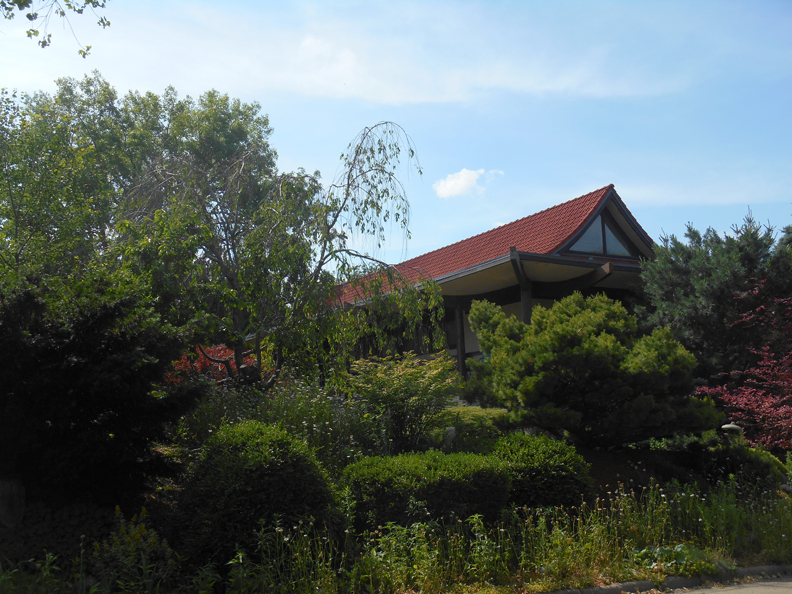
Anyone lucky enough to wander by this luxuriant property has seen it grow into a rich, sensory indulgence. And that is only my observation from street level. Radiant and abundant to passersby, while patently private. It is a genius re-invention of the Polsky-Milder original and it deeply warms my heart. Back in the 1990s, when speaking of their home and garden plans for the future, Georgianna Chen thoughtfully offered, “We don’t want to rush it. We’re going to be living here the rest of our lives, so we want to do it right.” And so it is.
This investigation now has a part two. Please read that article here: The 312 South 70th Avenue Lookbook and Interviews
This is only a small part of the story. We would all love to hear your opinions or insider clues. Please feel free to leave a memory or thoughts on the Buena Vista Place, the UNO acquisitions, Cedarnole Addition and Polsky’s design in Comments. Thank you, friends.
You can keep up with my latest investigations by joining my email group. Click on “Contact” then look for “Sign me up for the Newsletter!” Enter your email address. It will then display “Thank you, your sign-up request was successful!” Make sure to check your email address to confirm. You will get sent email updates every time I have written a new article. Also feel free to join My Omaha Obsession on Facebook. Thank you, Omaha friends. Miss Cassette
© Miss Cassette and myomahaobsession, 2019. Unauthorized use and/or duplication of this material without express and written permission from this site’s author and/or owner is strictly prohibited. Excerpts and links may be used, provided that full and clear credit is given to Miss Cassette and myomahaobsession with appropriate and specific direction to the original content.
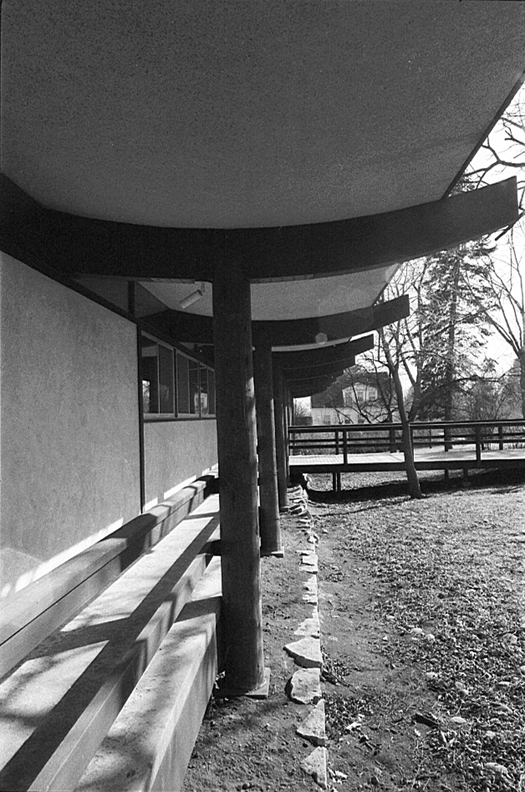
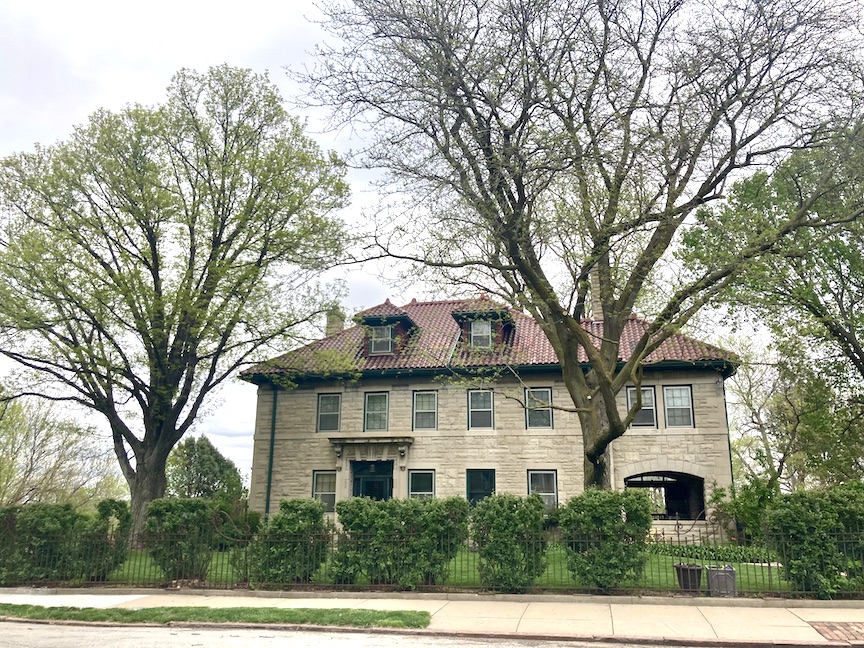
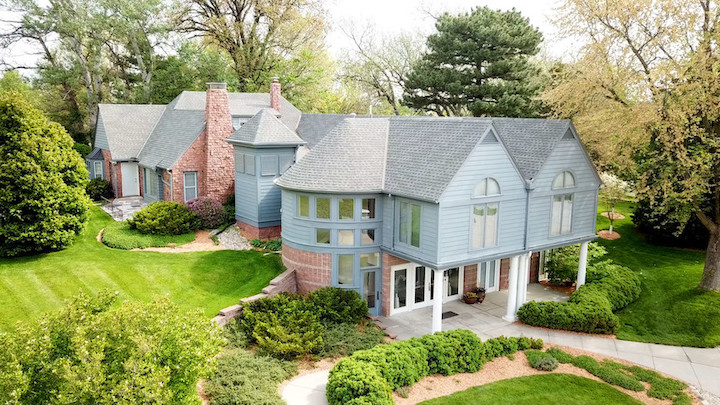
Wow! What research. I might be able to add more. Such a creative and interesting read !
Lois“Ducky” Milder
HELLO!! I am so, so excited that you wrote in. I would love to communicate. I will email you. I also just heard from Mr. Polsky’s son.
My grandparents John Arthur and Miriam Farbers home was at the corner of Dodge and Elmwood road. 105 South Elmwood Road. It was a stately Georgian mansion they built Directly across the street from Hymies home. It too was taken over by eminant domain by UNO but my grandmother was allowed to remain their till her death. She was tagged “oldest living resident on campus” I recall. Their home was known as the “House that Jack built.” My grandfather I believe owned the land UNO later acquired to build the small campus on. The land had once been his equestrian quarter horse farm. My grandfather, John A Farber as he was known owned a family Life insurance company called Service Life Insurance Co. Of Omaha SLICO as it was known. My parents built their home at 6700 Howard Street. It bordered Elmwood Park and the Boyle Manson that was at the end of Elmwood Road. Homes that were eventually razed and dorms now reside on. You are welcome to contact me for many more details, photos, and to fill in the history of Elmwood Road, the residents, and memories of this beautiful neighborhood. My dad Ajon Farber grew up with Mike and Orville and with all The Milder’s. Emily is one of my oldest friends, her mother Ducky like a second mom.. Seeing old photos of their home was wonderful! I vividly remember when the beans for the house were delivered on a huge flatbed each individually covered in magnificent oregami looking colored paper I think. The Polsky’s such dear friends of ours growing up too. For more, contact me at josieein@gmail.com. I no longer reside in Omaha. But you can reach me by email.
Jocelyn “Josi” (Farber) Rein
I thank you for writing in. Of course I have a file on the UNO-Farber house. I had imagined they were related to the Farbers in the Pacific Street mystery. So grateful to you for making the connection! I had found the equestrian farm, which might have become a riding school. As I said, it all overwhelming to me and I might have to break the mystery up into smaller bitesize stories. Thank You, Josi, for sharing these great memories!
Very interesting article.
Wow, what a thorough article. I spend a good chunk of my childhood at the pagoda house. Ducky is my mom’s sister, and she’s still around and doing great! So many memories I can’t go into now. Always happy to answer questions on this subject if you have any. Such a shame that Polsky couldn’t finish Neutra’s work on the JCC. Neutra was one of the most important twentieth century architects. Instead they got a super boring building. Polsky also built the house I grew up in at 9733 Spring St. Factoid: Mike Milder appears in Oliver Stone’s film Nixon. He’s the guy with the beard in the archival footage from the republican convention.
I would love to learn more about my grandparents farm if you have it. All my dads siblings have died and this is a mystery to me. I have wonderful memories of riding down Elmwood rood in the buggy they had in their carriage house. My older cousins use to pull the youngest ones in it. Please let me know how I can obtain the history about their farm. Thank you for unearthing this history. It’s greatly appreciated.
Frankie sending you and your family my love! I never knew about “ Big “ Mike being in that movie! I’m going to watch it.
Hey there Frank,
I found your comment on this post in a pretty roundabout way, but I am a design historian working on the history of the Bay Area manufacturer Heath Ceramics’ tile. Heath Ceramics produced tile for the Polsky house at 9733 Spring St. in 1966. I am curious to know if you might remember red tile on the interior or exterior of the house you grew up in? Might you have any photos? Would love to connect if so.
Thanks so much!
Rosa
I loved reading this. It brought back fond memories.
I spent a good chunk of my childhood in the Milder home, too. Don Polsky did move to Omaha to build the house. At the time, he and my mom also had two small children. Don, a Lincoln native who attended the University of Nebraska with Mike Milder, also did not want to raise my brother and me in Los Angeles.
I really enjoyed these stories and tbe history. I’m normally not a reader but articles kept me interested. My husband who is deceased and his friend worked for milder oil.
Fascinating, UNO is really fortunate they were able to get all that land when the horse track and Lancers arena went away… does seem crazy that they bought up all those expensive houses instead of building a satellite campus out west or something like that.
One odd thing that stood out to me, on the Milder Oil lighter photo, why does it say “Omaha 5, Nebr?” I’m sure it’s some totally obvious reason…
Hello,
Considering I used to live at 316 South 70th Avenue, I loved reading this article. My name is Ann Bloomingdale and I was 8 years old when the 1975 tornado hit our home and unfortunately destroyed it. I wanted you to know our family loved this piece and I would love to see any other pictures you might have of my home before it got destroyed. I just wanted to reach out to tell you how much I enjoyed seeing the photos and remembering all the good times in that neighborhood! Thanks!